TRENDING
The Most Valuable Human Discoveries
Published
2 years agoon
For numerous individuals, transforming their hard work and dedication into a million-dollar enterprise is a lifelong aspiration. Nevertheless, historical evidence suggests that there is an alternative approach to achieving such financial success: chance opportunities. Over the years, countless valuable products, antiques, and even medicines have been developed or discovered purely by happenstance.
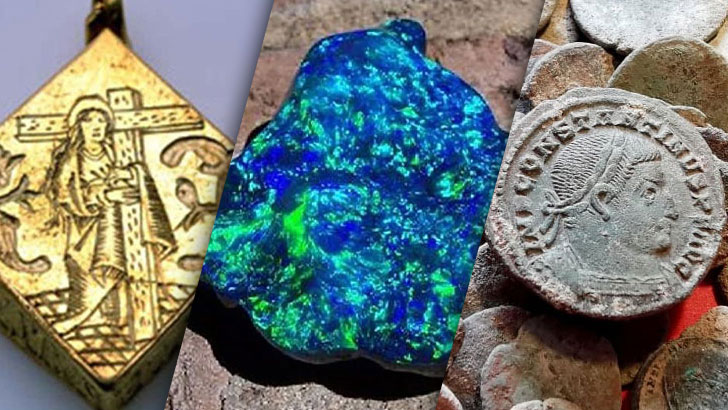 The individuals who chanced upon these breakthroughs were able to patent them and amass fortunes as a result. This article has compiled some of these chance discoveries for you to peruse. After reading through them, keep your eyes peeled for your own lucky break, which could be just around the corner!
The individuals who chanced upon these breakthroughs were able to patent them and amass fortunes as a result. This article has compiled some of these chance discoveries for you to peruse. After reading through them, keep your eyes peeled for your own lucky break, which could be just around the corner!
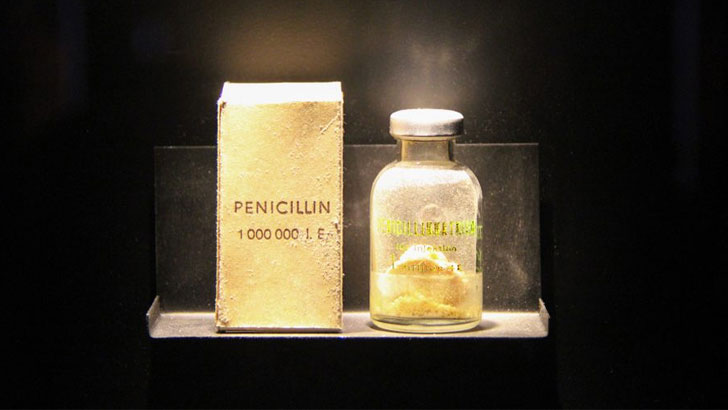 Discovered: 1928
Occasionally, a mistake can result in the loss of one’s job, but on rare occasions, it can actually help save the world. Alexander Fleming, a British physician and scientist, had spent several months researching bacterial cultures. However, during one of his vacations, he inadvertently left the bacterial cultures on his laboratory table. Upon his return to the laboratory, the scientist observed that a fungus belonging to the Penicillium notatum strain had contaminated and destroyed his bacterial cultures. However, this mishap led to the discovery that this particular fungus possessed the ability to inhibit the growth of bacteria. This chance discovery ultimately led to the development of an antibiotic that has since saved countless lives. Fleming’s oversight was rewarded with the Nobel Prize in medicine.
Discovered: 1928
Occasionally, a mistake can result in the loss of one’s job, but on rare occasions, it can actually help save the world. Alexander Fleming, a British physician and scientist, had spent several months researching bacterial cultures. However, during one of his vacations, he inadvertently left the bacterial cultures on his laboratory table. Upon his return to the laboratory, the scientist observed that a fungus belonging to the Penicillium notatum strain had contaminated and destroyed his bacterial cultures. However, this mishap led to the discovery that this particular fungus possessed the ability to inhibit the growth of bacteria. This chance discovery ultimately led to the development of an antibiotic that has since saved countless lives. Fleming’s oversight was rewarded with the Nobel Prize in medicine.
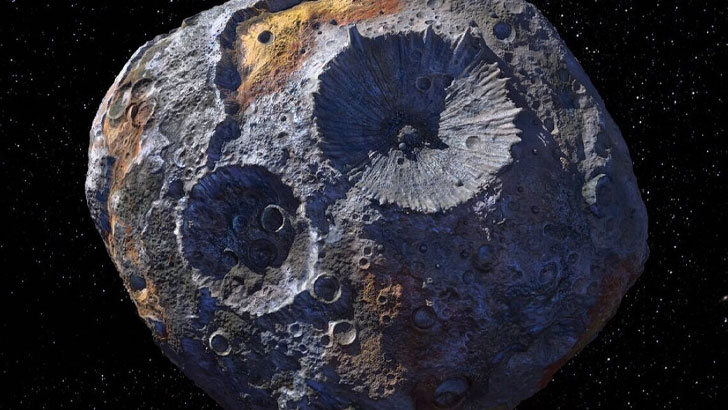 Discovered: 1852
Discovered in 1852, the Psyche 16 is an asteroid situated in the asteroid belt between Mars and Jupiter. Scientists have meticulously studied this asteroid for years and have determined that it is primarily composed of iron and nickel. However, what makes this asteroid truly remarkable is its staggering value. The metals contained within it are estimated to be worth a mind-boggling 10 trillion US dollars! If this sum were divided amongst every individual on the planet, we would all become millionaires. Regrettably, the technology required to extract these metals does not currently exist.
Discovered: 1852
Discovered in 1852, the Psyche 16 is an asteroid situated in the asteroid belt between Mars and Jupiter. Scientists have meticulously studied this asteroid for years and have determined that it is primarily composed of iron and nickel. However, what makes this asteroid truly remarkable is its staggering value. The metals contained within it are estimated to be worth a mind-boggling 10 trillion US dollars! If this sum were divided amongst every individual on the planet, we would all become millionaires. Regrettably, the technology required to extract these metals does not currently exist.
 Discovered: 1974
The Rubik’s cube is the world’s top-selling puzzle, yet it was not originally designed as a toy. Its inventor, Erno Rubik, was an architecture professor who constructed the puzzle as a visual aid to teach his students about spatial concepts. After each class, Rubik noticed that his students would attempt to return the cube to its initial position, leading him to refine his invention. He subsequently patented it, and within three years, the Rubik’s cube was being sold worldwide as a toy.
Discovered: 1974
The Rubik’s cube is the world’s top-selling puzzle, yet it was not originally designed as a toy. Its inventor, Erno Rubik, was an architecture professor who constructed the puzzle as a visual aid to teach his students about spatial concepts. After each class, Rubik noticed that his students would attempt to return the cube to its initial position, leading him to refine his invention. He subsequently patented it, and within three years, the Rubik’s cube was being sold worldwide as a toy.
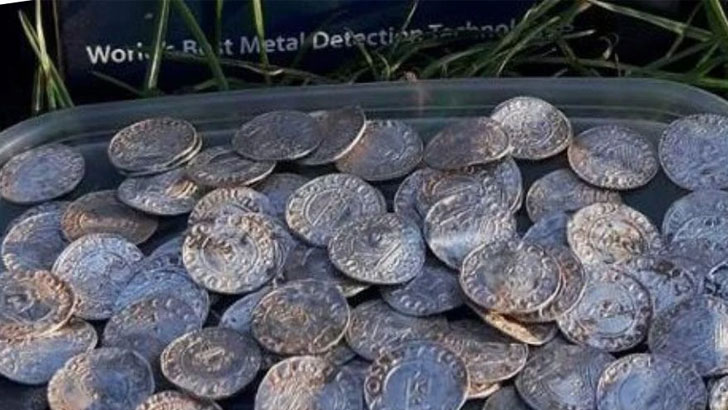 Discovered: 2019
Adam Staples and Lisa Grace are a couple who enjoy metal detecting as a hobby. During a walk in Somerset, England, they stumbled upon something that far exceeded their expectations: a medieval treasure. The treasure they unearthed consisted of 2,751 coins that were over a thousand years old and had previously belonged to King Harold II. The British Museum appraised their discovery to be worth 6 million euros. Although Adam and Lisa had to relinquish the coins to the museum, they were able to claim 50% of the proceeds from the transaction.
Discovered: 2019
Adam Staples and Lisa Grace are a couple who enjoy metal detecting as a hobby. During a walk in Somerset, England, they stumbled upon something that far exceeded their expectations: a medieval treasure. The treasure they unearthed consisted of 2,751 coins that were over a thousand years old and had previously belonged to King Harold II. The British Museum appraised their discovery to be worth 6 million euros. Although Adam and Lisa had to relinquish the coins to the museum, they were able to claim 50% of the proceeds from the transaction.
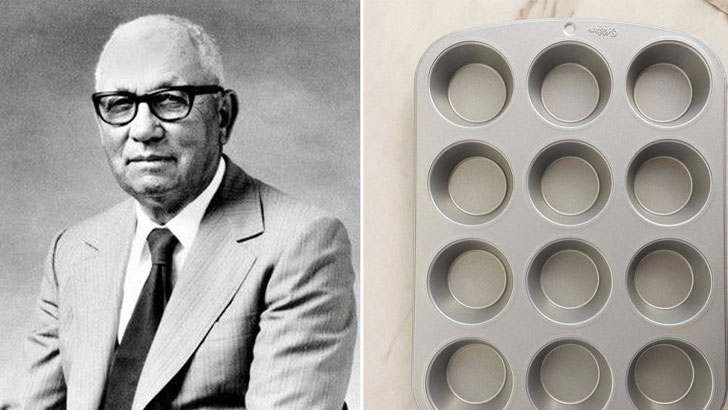 Discovered: 1838
Teflon is a ubiquitous material found in most kitchens, yet it was not originally intended for use as a non-stick coating for cookware. The material’s origins trace back to when chemist Roy Plunkett was commissioned to develop a non-toxic refrigerant chemical. One day, while allowing a substance to settle to create a gas, Plunkett discovered that it had transformed into a highly slippery substance the next day. This new material piqued the interest of French engineer Marc Gregoire, who blended it with aluminum to produce kitchen utensils.
Discovered: 1838
Teflon is a ubiquitous material found in most kitchens, yet it was not originally intended for use as a non-stick coating for cookware. The material’s origins trace back to when chemist Roy Plunkett was commissioned to develop a non-toxic refrigerant chemical. One day, while allowing a substance to settle to create a gas, Plunkett discovered that it had transformed into a highly slippery substance the next day. This new material piqued the interest of French engineer Marc Gregoire, who blended it with aluminum to produce kitchen utensils.
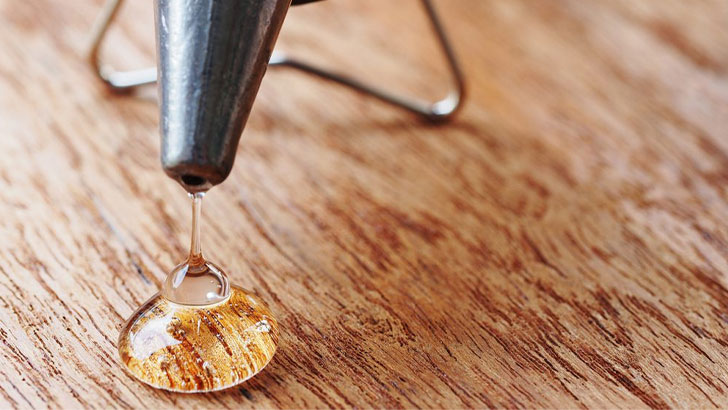 Discovered: 1942
Glue, like every other item on this list, was originally created for a completely different purpose. Engineer Harry Coover, employed by Kodak, was attempting to develop a transparent plastic material. However, during his experiments, he stumbled upon a remarkably sticky substance that rapidly solidified when exposed to air. This substance was initially employed to fuse fractured bones, but its use on human bodies was eventually prohibited by authorities. As a result, people began utilizing it to repair damaged objects around their homes.
Discovered: 1942
Glue, like every other item on this list, was originally created for a completely different purpose. Engineer Harry Coover, employed by Kodak, was attempting to develop a transparent plastic material. However, during his experiments, he stumbled upon a remarkably sticky substance that rapidly solidified when exposed to air. This substance was initially employed to fuse fractured bones, but its use on human bodies was eventually prohibited by authorities. As a result, people began utilizing it to repair damaged objects around their homes.
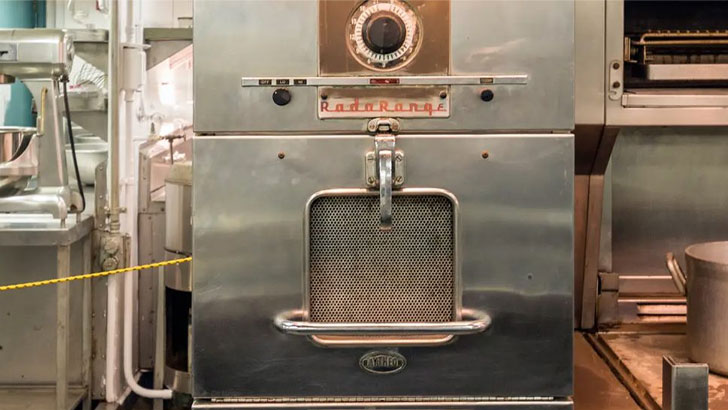 Discovered: 1945
The creation of the microwave oven was an accidental discovery that originated from a scientist named Percy Spencer who was working on enhancing the functionality of a radar. During his work with magnetons, which are devices used to measure distances, directions, and speeds, Spencer had a chocolate bar in his pocket that he intended to have for lunch. However, the chocolate bar melted when it got too close to the magneton. Intrigued by this, Spencer tested the effect on other foods, which led to the invention of the microwave oven that is commonly used today.
Discovered: 1945
The creation of the microwave oven was an accidental discovery that originated from a scientist named Percy Spencer who was working on enhancing the functionality of a radar. During his work with magnetons, which are devices used to measure distances, directions, and speeds, Spencer had a chocolate bar in his pocket that he intended to have for lunch. However, the chocolate bar melted when it got too close to the magneton. Intrigued by this, Spencer tested the effect on other foods, which led to the invention of the microwave oven that is commonly used today.
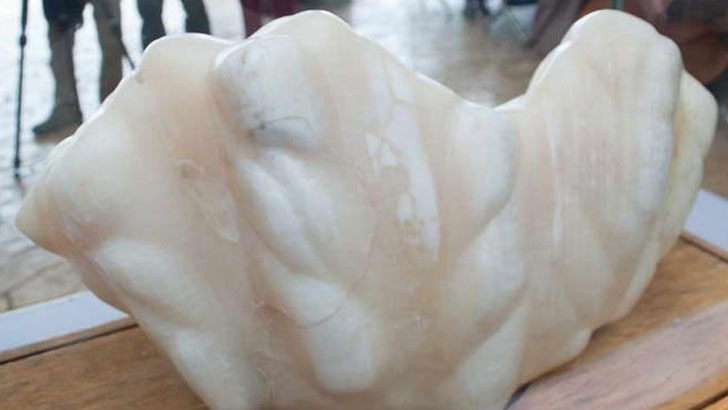 Discovered: 2006
Back in 2006, a Filipino fisherman’s life took an unexpected turn when his fishing expedition yielded something far beyond his expectations. Instead of a fish, he caught a colossal clam that contained a pearl weighing a whopping 75 pounds. This discovery remains the most massive pearl on record to date. The fortunate fisherman sought out experts, who estimated the pearl’s worth to be a staggering 96 million dollars. Strangely enough, the man initially declined the offer. However, several years later, he had a change of heart after his home was destroyed in a fire.
Discovered: 2006
Back in 2006, a Filipino fisherman’s life took an unexpected turn when his fishing expedition yielded something far beyond his expectations. Instead of a fish, he caught a colossal clam that contained a pearl weighing a whopping 75 pounds. This discovery remains the most massive pearl on record to date. The fortunate fisherman sought out experts, who estimated the pearl’s worth to be a staggering 96 million dollars. Strangely enough, the man initially declined the offer. However, several years later, he had a change of heart after his home was destroyed in a fire.
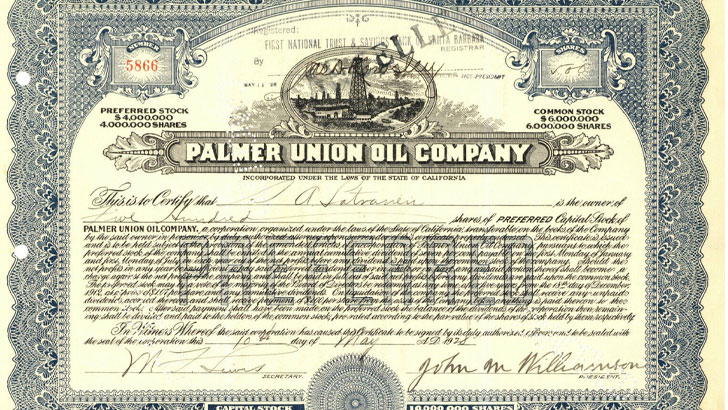 Discovered: 2008
While most individuals peruse yard sales purely out of interest, with little hope of unearthing anything valuable, Tony Marohn’s experience was vastly different. Mr. Marohn purchased a box of aged documents for a meager sum of $5, only to discover that the contents were worth far more. Among the papers was an invoice for 1,625 shares of Palmer Union Oil, equating to 1.8 million Coca-Cola shares. The value of these shares is estimated to be around $130 million, all obtained for just $5!
Discovered: 2008
While most individuals peruse yard sales purely out of interest, with little hope of unearthing anything valuable, Tony Marohn’s experience was vastly different. Mr. Marohn purchased a box of aged documents for a meager sum of $5, only to discover that the contents were worth far more. Among the papers was an invoice for 1,625 shares of Palmer Union Oil, equating to 1.8 million Coca-Cola shares. The value of these shares is estimated to be around $130 million, all obtained for just $5!
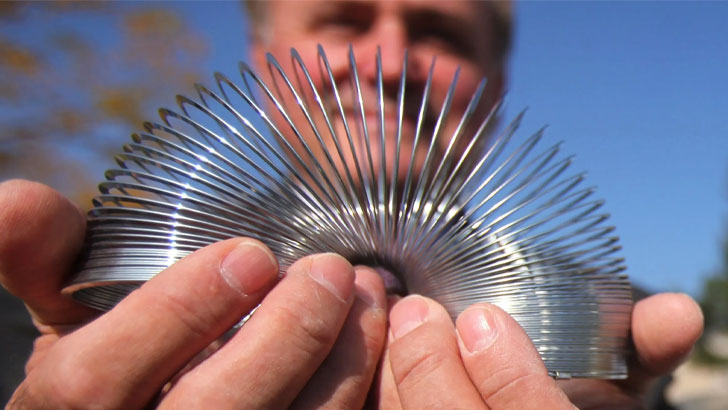 Discovered: 1943
The famous toy known as “Slinky” was not initially designed as a plaything. The origins of this spring-like toy date back to 1943 when a naval engineer named Richard T. James was striving to create springs that could stabilize navigation equipment in turbulent waters. While experimenting with different springs, one of them fell off a shelf, flipped over itself, landed on a book, and then gracefully fell to the ground. James demonstrated this occurrence to children in his locality, who were thrilled, and thus the concept of the toy came into existence.
Discovered: 1943
The famous toy known as “Slinky” was not initially designed as a plaything. The origins of this spring-like toy date back to 1943 when a naval engineer named Richard T. James was striving to create springs that could stabilize navigation equipment in turbulent waters. While experimenting with different springs, one of them fell off a shelf, flipped over itself, landed on a book, and then gracefully fell to the ground. James demonstrated this occurrence to children in his locality, who were thrilled, and thus the concept of the toy came into existence.
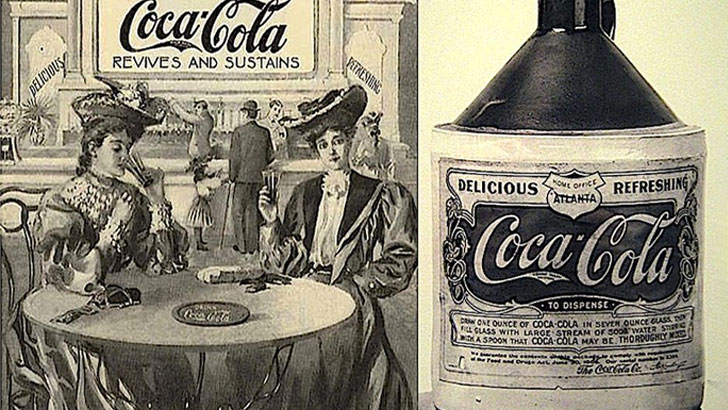 Discovered: 1893
It may be surprising, but the most widely consumed soft drink globally, and the corporation that has evolved into one of the most lucrative entities on the planet, came into existence by chance. It all commenced when pharmacist John S. Pemberton attempted to invent a syrup that would boost energy levels and alleviate digestive issues. After formulating the perfect recipe, Pemberton began distributing it. However, consumers began combining the syrup with carbonated water to enhance its taste, giving rise to Coca-Cola. The recipe has since been altered over time to achieve the ideal flavor, and this “mishap” has generated billions of dollars.
Discovered: 1893
It may be surprising, but the most widely consumed soft drink globally, and the corporation that has evolved into one of the most lucrative entities on the planet, came into existence by chance. It all commenced when pharmacist John S. Pemberton attempted to invent a syrup that would boost energy levels and alleviate digestive issues. After formulating the perfect recipe, Pemberton began distributing it. However, consumers began combining the syrup with carbonated water to enhance its taste, giving rise to Coca-Cola. The recipe has since been altered over time to achieve the ideal flavor, and this “mishap” has generated billions of dollars.
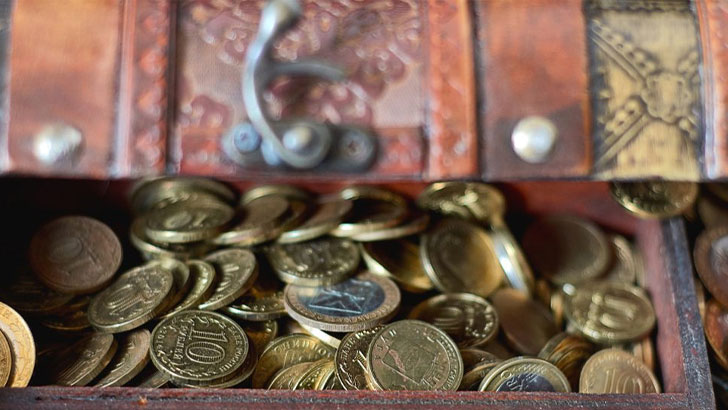 Discovered: 2007
A cluster of prankish youngsters made an unexpected revelation while playing in their Pennsylvania neighborhood. The children made the decision to venture into an abandoned house, where they stumbled upon a few coins lying on the floor. Upon returning home, they recounted their findings to their parents. Intrigued, the parents visited the deserted house and tore down one of its walls, leading them to discover hundreds of coins. As some of the coins were quite ancient, the value of this discovery skyrocketed to $200,000. We can only hope that the children received a share of the profits!
Discovered: 2007
A cluster of prankish youngsters made an unexpected revelation while playing in their Pennsylvania neighborhood. The children made the decision to venture into an abandoned house, where they stumbled upon a few coins lying on the floor. Upon returning home, they recounted their findings to their parents. Intrigued, the parents visited the deserted house and tore down one of its walls, leading them to discover hundreds of coins. As some of the coins were quite ancient, the value of this discovery skyrocketed to $200,000. We can only hope that the children received a share of the profits!
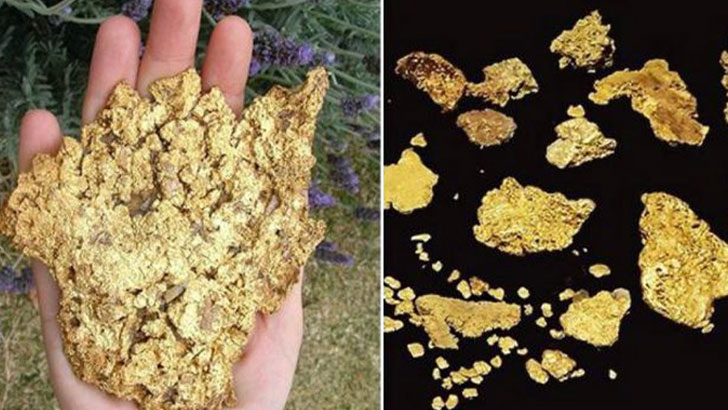 Discovered: 2013
This account concerns a farmer residing in the Australian city of Ballarat. One day, while going out for a stroll, he decided to bring his metal detector along, although he didn’t hold high hopes of uncovering anything valuable. However, his fortune exceeded his expectations in a significant way. Initially, the farmer discovered small chunks of pure gold scattered on the ground. Overjoyed, he began to dig and was astonished to uncover a 12-pound gold nugget. The metal was appraised at $315,000, transforming the fortunate man’s life completely.
Discovered: 2013
This account concerns a farmer residing in the Australian city of Ballarat. One day, while going out for a stroll, he decided to bring his metal detector along, although he didn’t hold high hopes of uncovering anything valuable. However, his fortune exceeded his expectations in a significant way. Initially, the farmer discovered small chunks of pure gold scattered on the ground. Overjoyed, he began to dig and was astonished to uncover a 12-pound gold nugget. The metal was appraised at $315,000, transforming the fortunate man’s life completely.
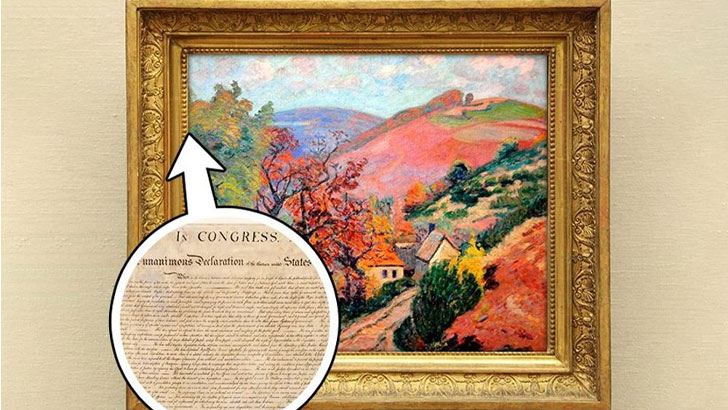 Discovered: 1991
One man was captivated by a painting at a garage sale and decided to purchase it for his home. With a price tag of only 4 dollars, it seemed like a steal. Yet, this acquisition held far greater significance than a mere living room decoration. While replacing the frame, the man uncovered an official copy of the United States Declaration of Independence, one of only 25 in existence. He subsequently sold the document at an auction for a staggering $2.4 million, a sum that likely provided him with ample means to purchase another piece of artwork.
Discovered: 1991
One man was captivated by a painting at a garage sale and decided to purchase it for his home. With a price tag of only 4 dollars, it seemed like a steal. Yet, this acquisition held far greater significance than a mere living room decoration. While replacing the frame, the man uncovered an official copy of the United States Declaration of Independence, one of only 25 in existence. He subsequently sold the document at an auction for a staggering $2.4 million, a sum that likely provided him with ample means to purchase another piece of artwork.
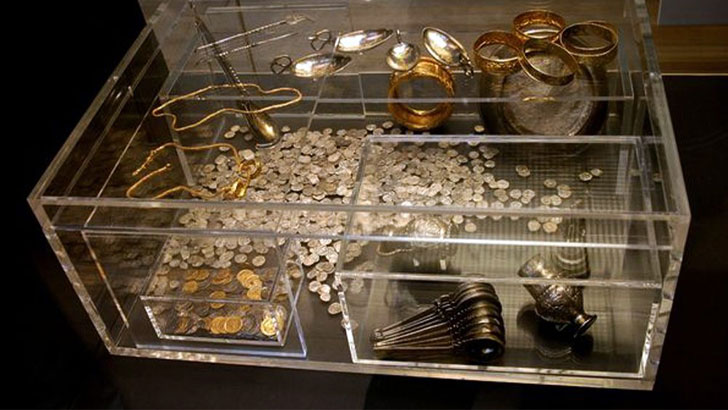 Discovered: 1992
In 1992, a farmer from England named Peter Whatling lost his hammer and decided to use his friend’s metal detector to find it. During his search, he stumbled upon a wooden box containing gold jewelry and numerous coins worth a staggering $15 million. However, he couldn’t keep the treasure and handed it over to the British Museum. Fortunately, he received a compensation of $2.3 million for his discovery, which he shared with his friend.
Discovered: 1992
In 1992, a farmer from England named Peter Whatling lost his hammer and decided to use his friend’s metal detector to find it. During his search, he stumbled upon a wooden box containing gold jewelry and numerous coins worth a staggering $15 million. However, he couldn’t keep the treasure and handed it over to the British Museum. Fortunately, he received a compensation of $2.3 million for his discovery, which he shared with his friend.
 Discovered: 1957
In 1957, Al Fielding and Marc Chavannes attempted to create a unique version of wallpaper that had an embossed texture. However, their idea did not gain much traction in the market. Two years later, while flying, Chavannes had an epiphany that the textured paper could be used to safeguard delicate items during transit. As their idea gained popularity, IBM became one of the first organizations to utilize bubble wrap for packaging. The invention by Fielding and Chavannes proved invaluable in protecting the first-ever computers transported.
Discovered: 1957
In 1957, Al Fielding and Marc Chavannes attempted to create a unique version of wallpaper that had an embossed texture. However, their idea did not gain much traction in the market. Two years later, while flying, Chavannes had an epiphany that the textured paper could be used to safeguard delicate items during transit. As their idea gained popularity, IBM became one of the first organizations to utilize bubble wrap for packaging. The invention by Fielding and Chavannes proved invaluable in protecting the first-ever computers transported.
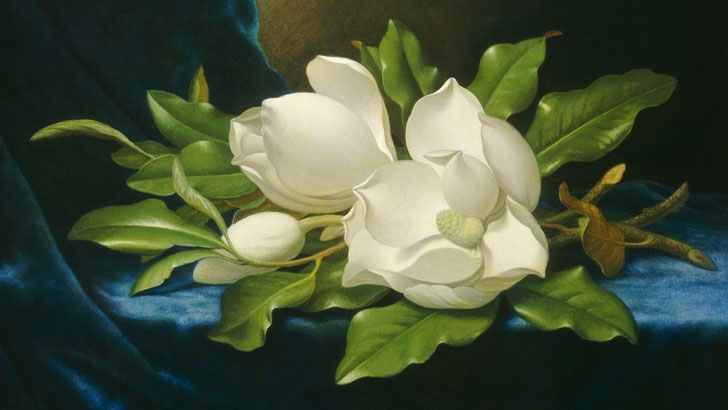 Discovered: 1999
Back in 1999, a resident of Indiana, USA, stumbled upon an astonishing discovery. While playing a board game that featured a card with a painting, he noticed the striking resemblance of the artwork to a piece hanging on his wall. This sparked his curiosity, and he wondered whether his painting could be an original work by the renowned artist, Martin Johnson Heade. The man contacted an expert for a professional opinion, and to his surprise, the painting was confirmed to be an authentic piece by Heade. The artwork went on to sell for a whopping 1.25 million dollars, and all this while it had been hanging in his house.
Discovered: 1999
Back in 1999, a resident of Indiana, USA, stumbled upon an astonishing discovery. While playing a board game that featured a card with a painting, he noticed the striking resemblance of the artwork to a piece hanging on his wall. This sparked his curiosity, and he wondered whether his painting could be an original work by the renowned artist, Martin Johnson Heade. The man contacted an expert for a professional opinion, and to his surprise, the painting was confirmed to be an authentic piece by Heade. The artwork went on to sell for a whopping 1.25 million dollars, and all this while it had been hanging in his house.
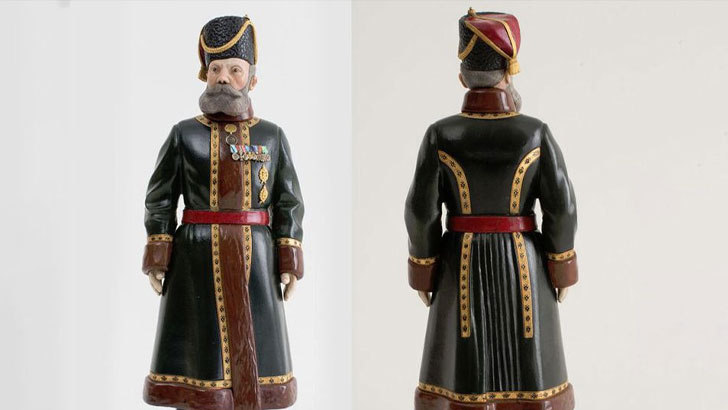 Discovered: 2013
George and Betty Davis, a couple from New York, were inspired one day to give their attic a thorough cleaning. Amidst a collection of miscellaneous boxes and clutter, they stumbled upon a figure that appeared to have some value. It was adorned with exquisite embellishments and resembled a Russian guard. Seeking expert advice, George and Betty discovered that the figure was an original piece by the renowned Russian jeweler, Fabergé. The figure was later auctioned off for a staggering $5.2 million. The incredible tale of George and Betty Davis serves as a testament to the hidden treasures that can be unearthed during a long-overdue attic cleaning.
Discovered: 2013
George and Betty Davis, a couple from New York, were inspired one day to give their attic a thorough cleaning. Amidst a collection of miscellaneous boxes and clutter, they stumbled upon a figure that appeared to have some value. It was adorned with exquisite embellishments and resembled a Russian guard. Seeking expert advice, George and Betty discovered that the figure was an original piece by the renowned Russian jeweler, Fabergé. The figure was later auctioned off for a staggering $5.2 million. The incredible tale of George and Betty Davis serves as a testament to the hidden treasures that can be unearthed during a long-overdue attic cleaning.
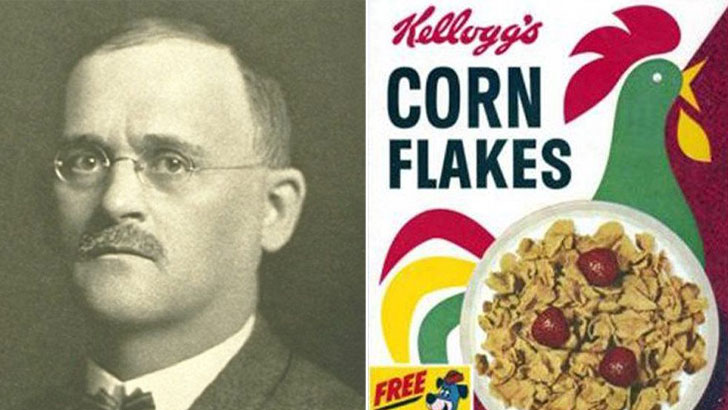 Discovered: 1898
Dr. John Harvey Kellogg is credited as the creator of Corn Flakes. During his early career, he established a sanatorium and focused on improving the digestion of his patients. Seeking an easy, healthy, and affordable meal option, Kellogg began experimenting with various ingredients. One day, while cooking wheat, he accidentally left it in the oven overnight. The next day, he re-baked it and decided to serve it to his patients. To his delight, they loved it! This unexpected creation led to the development of the now-famous Corn Flakes cereal.
Discovered: 1898
Dr. John Harvey Kellogg is credited as the creator of Corn Flakes. During his early career, he established a sanatorium and focused on improving the digestion of his patients. Seeking an easy, healthy, and affordable meal option, Kellogg began experimenting with various ingredients. One day, while cooking wheat, he accidentally left it in the oven overnight. The next day, he re-baked it and decided to serve it to his patients. To his delight, they loved it! This unexpected creation led to the development of the now-famous Corn Flakes cereal.
 Discovered: 1956
The pacemaker, a groundbreaking piece of medical technology, has an unexpected origin story. In 1956, inventor Wilson Greatbatch set out to create an audio recorder that could capture the sound of a beating heart. However, the device he developed turned out to be more suited to regulating the heart rate than recording sounds. Greatbatch discussed his discovery with surgeon William Chardack, who went on to implant the world’s first pacemaker in a human in 1960. Despite its unintentional creation, the pacemaker has since become a vital medical device that has saved countless lives.
Discovered: 1956
The pacemaker, a groundbreaking piece of medical technology, has an unexpected origin story. In 1956, inventor Wilson Greatbatch set out to create an audio recorder that could capture the sound of a beating heart. However, the device he developed turned out to be more suited to regulating the heart rate than recording sounds. Greatbatch discussed his discovery with surgeon William Chardack, who went on to implant the world’s first pacemaker in a human in 1960. Despite its unintentional creation, the pacemaker has since become a vital medical device that has saved countless lives.
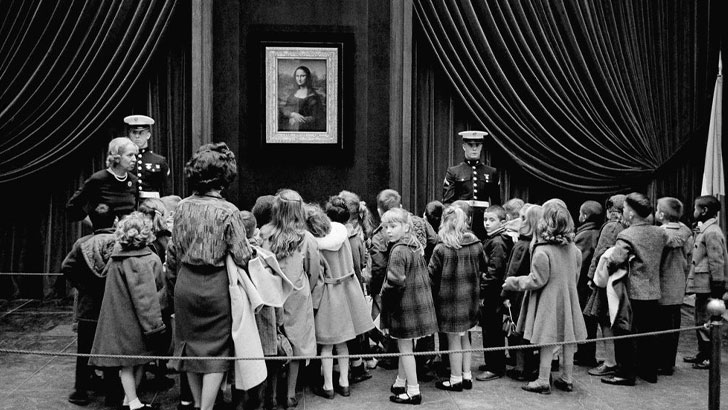 Discovered: 1913
The Mona Lisa Foundation made an incredible revelation in 2012 when it announced the existence of a second version of Leonardo Da Vinci’s iconic painting, La Gioconda. The discovery can be traced back to 1913, when a London-based art enthusiast named Hugh Blaker unknowingly purchased the masterpiece. For years, the painting hung on the wall of a London apartment, with its owners unaware of its true worth. The artwork, also known as the Second Mona Lisa, changed hands several times over the years and eventually found its way into a Swiss bank vault for 30 years. After being rediscovered in 2008, extensive studies were conducted to confirm its authenticity. This discovery has proven to be invaluable, suggesting that there may be more undiscovered works of art by Da Vinci waiting to be found.
Discovered: 1913
The Mona Lisa Foundation made an incredible revelation in 2012 when it announced the existence of a second version of Leonardo Da Vinci’s iconic painting, La Gioconda. The discovery can be traced back to 1913, when a London-based art enthusiast named Hugh Blaker unknowingly purchased the masterpiece. For years, the painting hung on the wall of a London apartment, with its owners unaware of its true worth. The artwork, also known as the Second Mona Lisa, changed hands several times over the years and eventually found its way into a Swiss bank vault for 30 years. After being rediscovered in 2008, extensive studies were conducted to confirm its authenticity. This discovery has proven to be invaluable, suggesting that there may be more undiscovered works of art by Da Vinci waiting to be found.
 Discovered: 1941
During World War II, the US Army requested Johnson & Johnson to develop a material that could protect their ammunition from moisture caused by water and mud. The company responded by creating a tape composed of water-resistant plastic and equipped with glue on both sides to secure objects. This tape proved to be very useful, so Johnson & Johnson decided to make it commercially available. This product, known as duct tape, has become one of the most ubiquitous tools used in various industries today.
Discovered: 1941
During World War II, the US Army requested Johnson & Johnson to develop a material that could protect their ammunition from moisture caused by water and mud. The company responded by creating a tape composed of water-resistant plastic and equipped with glue on both sides to secure objects. This tape proved to be very useful, so Johnson & Johnson decided to make it commercially available. This product, known as duct tape, has become one of the most ubiquitous tools used in various industries today.
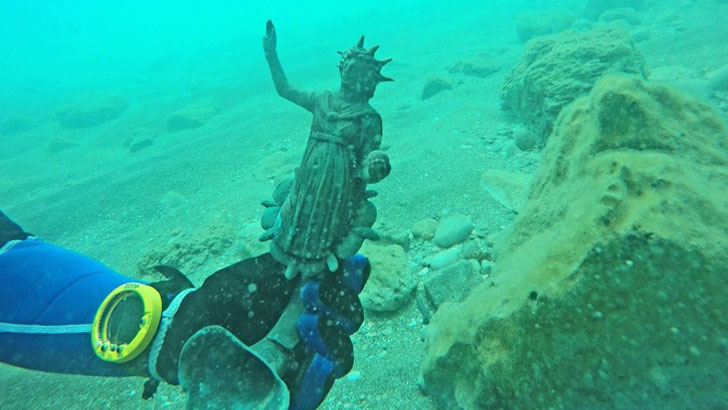 Discovered: 2016
Underwater archeology experts made a remarkable discovery in 2016 in Caesarea, on Israel’s Mediterranean coast. The discovery comprised hundreds of Roman-era coins, bronze sculptures, and other objects. The archeologists confirmed that the artifacts were around 1,600 years old and were incredibly well-preserved. This discovery is of immense historical value because it is the largest collection of artifacts found in the sea in the past thirty years.
Discovered: 2016
Underwater archeology experts made a remarkable discovery in 2016 in Caesarea, on Israel’s Mediterranean coast. The discovery comprised hundreds of Roman-era coins, bronze sculptures, and other objects. The archeologists confirmed that the artifacts were around 1,600 years old and were incredibly well-preserved. This discovery is of immense historical value because it is the largest collection of artifacts found in the sea in the past thirty years.
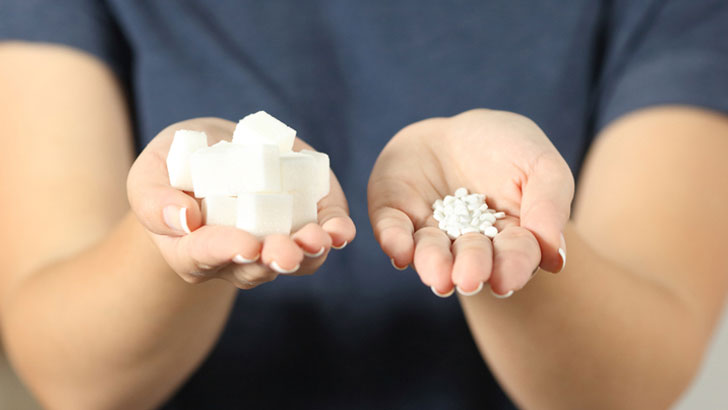 Discovered: 1829
Russian chemist Constantin Fahlberg stumbled upon the invention of saccharin through an unhygienic mistake. While researching coal tar derivatives, he interrupted his work for lunch without washing his hands. Upon eating, Fahlberg noticed a surprisingly sweet taste in his bread, which had come into contact with his experimental substance. Unknowingly, he had ingested his own discovery. Fortunately, the chemicals were non-toxic, and Fahlberg’s oversight led to the profitable discovery of saccharin.
Discovered: 1829
Russian chemist Constantin Fahlberg stumbled upon the invention of saccharin through an unhygienic mistake. While researching coal tar derivatives, he interrupted his work for lunch without washing his hands. Upon eating, Fahlberg noticed a surprisingly sweet taste in his bread, which had come into contact with his experimental substance. Unknowingly, he had ingested his own discovery. Fortunately, the chemicals were non-toxic, and Fahlberg’s oversight led to the profitable discovery of saccharin.
 Discovered:1826
In 1826, while working on a chemical project, British pharmacist John Walker accidentally discovered the first match. As he stirred the mixture with a stick, he noticed a tear-shaped substance sticking to one end. Attempting to remove it, he scraped the stick against a surface and was amazed when sparks and flames ignited. Despite his significant breakthrough, Walker chose not to patent the invention, wanting to share it with the world. Unfortunately, someone else filed for the patent, taking credit for and profiting from Walker’s invention.
Discovered:1826
In 1826, while working on a chemical project, British pharmacist John Walker accidentally discovered the first match. As he stirred the mixture with a stick, he noticed a tear-shaped substance sticking to one end. Attempting to remove it, he scraped the stick against a surface and was amazed when sparks and flames ignited. Despite his significant breakthrough, Walker chose not to patent the invention, wanting to share it with the world. Unfortunately, someone else filed for the patent, taking credit for and profiting from Walker’s invention.
 Discovered: 1990
The origins of this popular dance can be traced back to a comical mistake. Beto Pérez, a Colombian dance instructor, was accustomed to teaching choreographed routines that he had meticulously planned and rehearsed in advance. However, one fateful day, Beto forgot to bring the CD that he typically used for his classes. Faced with this dilemma, he decided to improvise. He grabbed a Latin music CD that he usually listened to while driving and played it for his class, spontaneously creating dance moves for them to follow. To his surprise, his students were thrilled with the impromptu routine, and Beto’s improvisation eventually evolved into one of the most popular and widespread fitness disciplines in the world.
Discovered: 1990
The origins of this popular dance can be traced back to a comical mistake. Beto Pérez, a Colombian dance instructor, was accustomed to teaching choreographed routines that he had meticulously planned and rehearsed in advance. However, one fateful day, Beto forgot to bring the CD that he typically used for his classes. Faced with this dilemma, he decided to improvise. He grabbed a Latin music CD that he usually listened to while driving and played it for his class, spontaneously creating dance moves for them to follow. To his surprise, his students were thrilled with the impromptu routine, and Beto’s improvisation eventually evolved into one of the most popular and widespread fitness disciplines in the world.
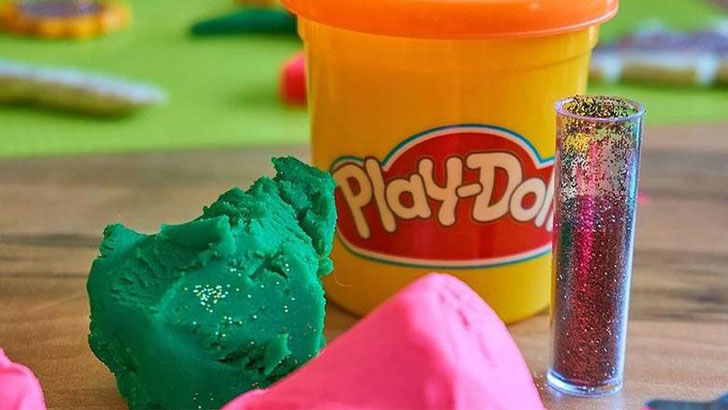 Discovered: 1949
Play-Doh, a beloved toy for generations, was originally created as a product for cleaning wallpaper. The creators soon discovered that it could also be used for molding, alongside its cleaning properties. A school teacher later found out about this malleable substance and introduced it to her students for fun activities. After confirming its safety, Play-Doh became a popular children’s toy. In 2003, the Toy Association recognized it as one of the greatest toys of the century.
Discovered: 1949
Play-Doh, a beloved toy for generations, was originally created as a product for cleaning wallpaper. The creators soon discovered that it could also be used for molding, alongside its cleaning properties. A school teacher later found out about this malleable substance and introduced it to her students for fun activities. After confirming its safety, Play-Doh became a popular children’s toy. In 2003, the Toy Association recognized it as one of the greatest toys of the century.
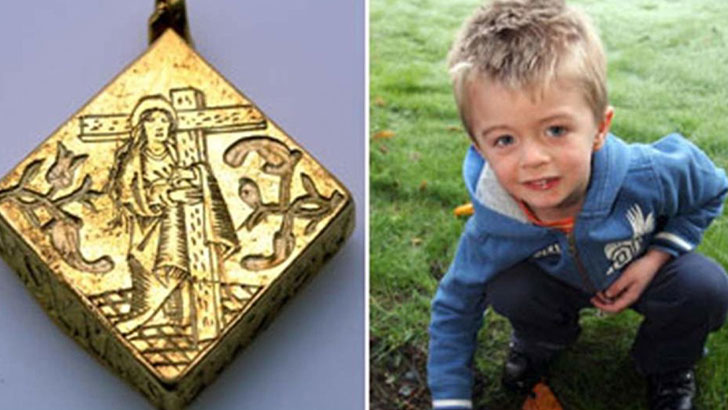 Discovered: 2010
In Essex, England, back in 2010, a three-year-old boy named James Hyatt was playing with a metal detector on a farm when he stumbled upon something unusual. The tool led him to a small metallic object that didn’t look like a toy. It turned out to be a 16th-century gold pendant, valued at $4.4 million by specialists. The pendant was later sold for that amount, and hopefully, little James received his fair share of the treasure!
Discovered: 2010
In Essex, England, back in 2010, a three-year-old boy named James Hyatt was playing with a metal detector on a farm when he stumbled upon something unusual. The tool led him to a small metallic object that didn’t look like a toy. It turned out to be a 16th-century gold pendant, valued at $4.4 million by specialists. The pendant was later sold for that amount, and hopefully, little James received his fair share of the treasure!
 Discovered: 1895
The impact of X-rays on modern medicine is immeasurable. Surprisingly, this groundbreaking invention was not the result of years of research, but rather a serendipitous discovery. One day, while experimenting with a cathode ray tube, German physicist Wilhelm Roentgen noticed that the rays emitted from the tube produced light on a screen in the room. When he attempted to block the light, he saw his own bones projected onto the surface of the screen. After some tweaking and refining, Roentgen presented his findings to the scientific community, ultimately earning the Nobel Prize in Physics in 1901.
Discovered: 1895
The impact of X-rays on modern medicine is immeasurable. Surprisingly, this groundbreaking invention was not the result of years of research, but rather a serendipitous discovery. One day, while experimenting with a cathode ray tube, German physicist Wilhelm Roentgen noticed that the rays emitted from the tube produced light on a screen in the room. When he attempted to block the light, he saw his own bones projected onto the surface of the screen. After some tweaking and refining, Roentgen presented his findings to the scientific community, ultimately earning the Nobel Prize in Physics in 1901.
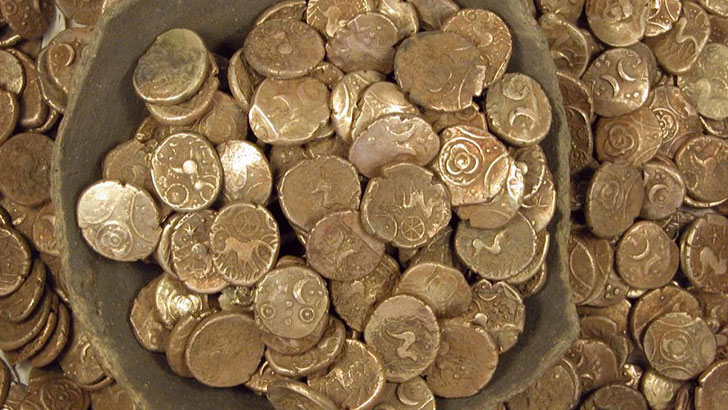 Discovered: 2013
Without the aid of a beloved family member, this discovery would not have been possible. One day in 2013, a couple from Sierra Nevada, California, was out for a walk with their dog, just like any other day. But on this particular occasion, the family noticed something protruding from the dirt on the trail, so they stopped to investigate. To their surprise, they found several tins containing 1,373 gold coins from 1890. Experts estimated the value of the treasure to be $10 million. Despite the extensive media coverage surrounding this discovery, the couple (and their dog) chose to remain anonymous.
Discovered: 2013
Without the aid of a beloved family member, this discovery would not have been possible. One day in 2013, a couple from Sierra Nevada, California, was out for a walk with their dog, just like any other day. But on this particular occasion, the family noticed something protruding from the dirt on the trail, so they stopped to investigate. To their surprise, they found several tins containing 1,373 gold coins from 1890. Experts estimated the value of the treasure to be $10 million. Despite the extensive media coverage surrounding this discovery, the couple (and their dog) chose to remain anonymous.
 Discovered: 1901
Ice cream has been a popular treat for centuries, but it wasn’t until 1901 that it was served in ice cream cones. At a fair that year, an ice cream vendor was doing brisk business while the waffle stand next to it was struggling to make sales. Someone came up with the clever idea to roll up a waffle and place a scoop of ice cream on top, and this simple innovation revolutionized the world of frozen desserts. Not only did it boost waffle sales, but it also created one of the most beloved treats of the 20th century.
Discovered: 1901
Ice cream has been a popular treat for centuries, but it wasn’t until 1901 that it was served in ice cream cones. At a fair that year, an ice cream vendor was doing brisk business while the waffle stand next to it was struggling to make sales. Someone came up with the clever idea to roll up a waffle and place a scoop of ice cream on top, and this simple innovation revolutionized the world of frozen desserts. Not only did it boost waffle sales, but it also created one of the most beloved treats of the 20th century.
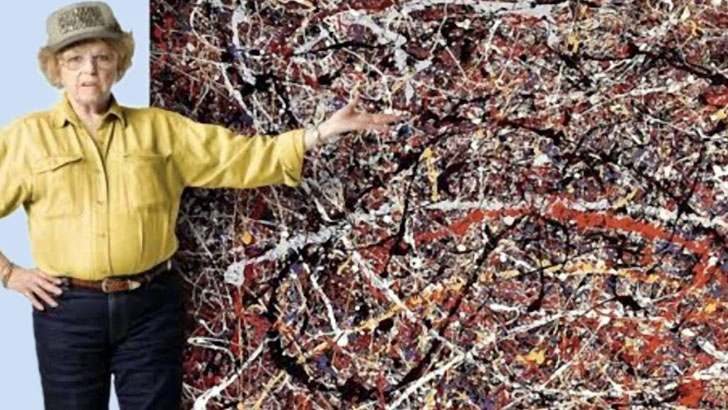 Discovered: 1995
In 1995, Teri Horton, a California truck driver, stumbled upon a painting at a garage sale for $5, unknowingly changing her life forever. At first, she planned to gift the painting to a friend, but a neighbor pointed out that it resembled the works of artist Jackson Pollock. Curious, Teri consulted a specialist who confirmed the painting’s authenticity. Despite receiving numerous offers for the painting, Teri turned them down, convinced that she could fetch an even higher price.
Discovered: 1995
In 1995, Teri Horton, a California truck driver, stumbled upon a painting at a garage sale for $5, unknowingly changing her life forever. At first, she planned to gift the painting to a friend, but a neighbor pointed out that it resembled the works of artist Jackson Pollock. Curious, Teri consulted a specialist who confirmed the painting’s authenticity. Despite receiving numerous offers for the painting, Teri turned them down, convinced that she could fetch an even higher price.
 Discovered: 1994
Chris Clark’s patience paid off when he finally sold the domain “pizza.com” for a staggering $2.6 million in 2008, fourteen years after he registered it as a marketing strategy. His hope was that someday, someone would want to pay a considerable sum to acquire the website address. He received multiple offers before finally accepting the highest one.
Discovered: 1994
Chris Clark’s patience paid off when he finally sold the domain “pizza.com” for a staggering $2.6 million in 2008, fourteen years after he registered it as a marketing strategy. His hope was that someday, someone would want to pay a considerable sum to acquire the website address. He received multiple offers before finally accepting the highest one.
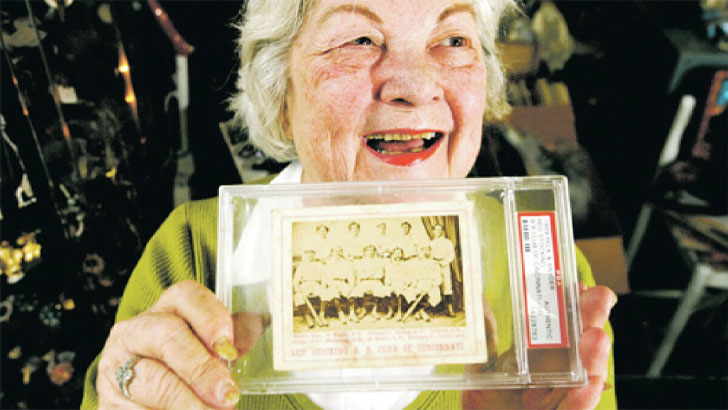 Discovered: 2009
While cleaning old boxes in her storage one day, 72-year-old Bernice Gallego stumbled upon a baseball card that caught her eye. Thinking it might fetch her a few bucks, she decided to list it on eBay for a modest $10. However, one of her friends advised her to withdraw the offer as the card could be worth much more. As it turned out, the Cincinnati Reds team card, made in 1869, was one of the oldest baseball cards in existence. Bernice’s decision to heed her friend’s advice proved to be lucrative, as she eventually sold the card for a whopping $75,000.
Discovered: 2009
While cleaning old boxes in her storage one day, 72-year-old Bernice Gallego stumbled upon a baseball card that caught her eye. Thinking it might fetch her a few bucks, she decided to list it on eBay for a modest $10. However, one of her friends advised her to withdraw the offer as the card could be worth much more. As it turned out, the Cincinnati Reds team card, made in 1869, was one of the oldest baseball cards in existence. Bernice’s decision to heed her friend’s advice proved to be lucrative, as she eventually sold the card for a whopping $75,000.
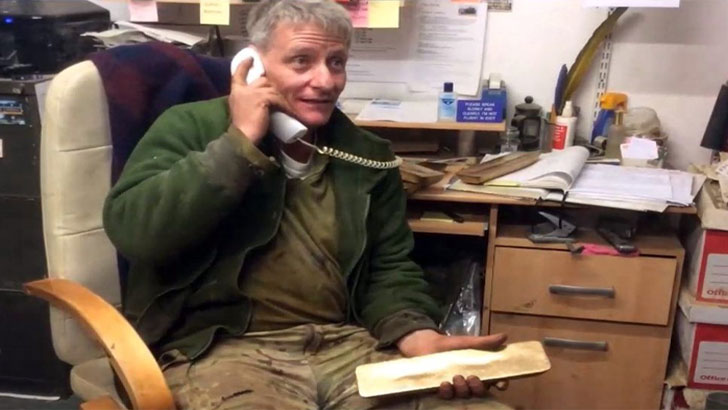 Discovered: 2017
Nick Mead is a military vehicle collector with a unique hobby of acquiring tanks. In 2017, he purchased another tank to add to his collection, with the intention of documenting its restoration process on the internet. During the filming, he made an unexpected discovery: five bars of pure gold inside the tank, each weighing over ten pounds. The value of Nick’s find was later estimated at $2.7 million, a considerable sum compared to the $45,000 he spent on the tank.
Discovered: 2017
Nick Mead is a military vehicle collector with a unique hobby of acquiring tanks. In 2017, he purchased another tank to add to his collection, with the intention of documenting its restoration process on the internet. During the filming, he made an unexpected discovery: five bars of pure gold inside the tank, each weighing over ten pounds. The value of Nick’s find was later estimated at $2.7 million, a considerable sum compared to the $45,000 he spent on the tank.
 Discovered: 1991
Two German climbers had a spine-chilling experience when they stumbled upon a mysterious human-shaped object on the ground of a mountain in 1991. The climbers immediately notified the authorities, and upon inspection, the officials suspected that this discovery would be historic. The climbers had discovered the famous Ötzi, now known as the oldest mummy ever found in Europe. It is believed that Ötzi died in 3255 BC. This was an invaluable discovery, and it was undoubtedly worth the fright that the hikers went through.
Discovered: 1991
Two German climbers had a spine-chilling experience when they stumbled upon a mysterious human-shaped object on the ground of a mountain in 1991. The climbers immediately notified the authorities, and upon inspection, the officials suspected that this discovery would be historic. The climbers had discovered the famous Ötzi, now known as the oldest mummy ever found in Europe. It is believed that Ötzi died in 3255 BC. This was an invaluable discovery, and it was undoubtedly worth the fright that the hikers went through.
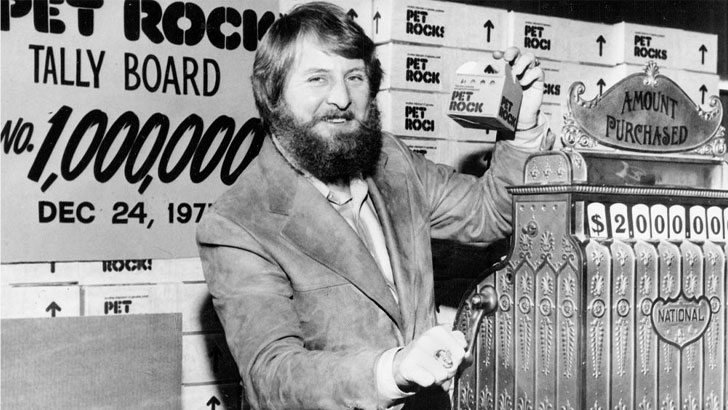 Discovered: 1975
Gary Dahl’s strange idea of the perfect pet turned out to be a successful business venture. One night, while joking with his friends, Dahl suggested that a rock would be an ideal pet since it wouldn’t need to be fed or cleaned, and it couldn’t die or run away. Surprisingly, his joke turned into reality when he created a product called “Pet Rock.” The package included a rock, along with decorations and accessories. Despite the unlikely concept, Dahl sold an impressive 1.5 million units, earning a staggering $6 million.
Discovered: 1975
Gary Dahl’s strange idea of the perfect pet turned out to be a successful business venture. One night, while joking with his friends, Dahl suggested that a rock would be an ideal pet since it wouldn’t need to be fed or cleaned, and it couldn’t die or run away. Surprisingly, his joke turned into reality when he created a product called “Pet Rock.” The package included a rock, along with decorations and accessories. Despite the unlikely concept, Dahl sold an impressive 1.5 million units, earning a staggering $6 million.
 Discovered: 2006
In 2006, a student from Berlin went to a flea market hoping to find an affordable sofa. After browsing for a while, he eventually purchased a used sofa bed for $215. Upon arriving home and examining his purchase more closely, he discovered an unexpected treasure hidden within the furniture: a painting. But this was no ordinary painting; it was a work of art titled “Preparation to Escape to Egypt.” The stunning piece ended up being sold at an auction for a whopping $27,000. The fortunate student who stumbled upon the valuable painting chose to remain anonymous.
Discovered: 2006
In 2006, a student from Berlin went to a flea market hoping to find an affordable sofa. After browsing for a while, he eventually purchased a used sofa bed for $215. Upon arriving home and examining his purchase more closely, he discovered an unexpected treasure hidden within the furniture: a painting. But this was no ordinary painting; it was a work of art titled “Preparation to Escape to Egypt.” The stunning piece ended up being sold at an auction for a whopping $27,000. The fortunate student who stumbled upon the valuable painting chose to remain anonymous.
 Discovered: 22 A.D.
Several theories surround the origin of fireworks, but one of the most popular stories dates back more than 2000 years to China. Legend has it that a Chinese cook was mixing sulfuric acid, saltpeter, and charcoal in an attempt to create a fire in the open air. However, the dangerous combination resulted in an explosion. To keep evil spirits away, the cook decided to place these ingredients inside a bamboo stick, which resulted in the first firework. Nowadays, people enjoy fireworks to celebrate special occasions, and the only side effect is the occasional fright they may cause to pets.
Discovered: 22 A.D.
Several theories surround the origin of fireworks, but one of the most popular stories dates back more than 2000 years to China. Legend has it that a Chinese cook was mixing sulfuric acid, saltpeter, and charcoal in an attempt to create a fire in the open air. However, the dangerous combination resulted in an explosion. To keep evil spirits away, the cook decided to place these ingredients inside a bamboo stick, which resulted in the first firework. Nowadays, people enjoy fireworks to celebrate special occasions, and the only side effect is the occasional fright they may cause to pets.
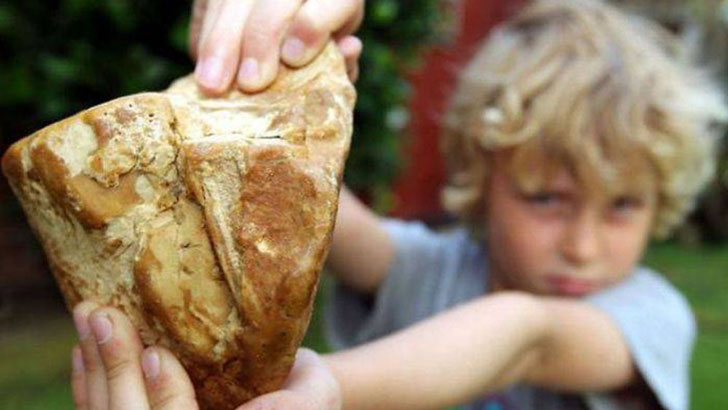 Discovered: 2012
Charlie Naysmith, a young boy, stumbled upon a unique rock while walking with his father on a beach in Dorset in 2012. Intrigued by its appearance, Charlie took the rock home for further inspection. Upon closer examination, Charlie and his father discovered that the rock was actually a piece of gray amber, a highly valued substance in the perfume industry that is created from whale vomit. Experts evaluated Charlie’s discovery at $113,000.
Discovered: 2012
Charlie Naysmith, a young boy, stumbled upon a unique rock while walking with his father on a beach in Dorset in 2012. Intrigued by its appearance, Charlie took the rock home for further inspection. Upon closer examination, Charlie and his father discovered that the rock was actually a piece of gray amber, a highly valued substance in the perfume industry that is created from whale vomit. Experts evaluated Charlie’s discovery at $113,000.
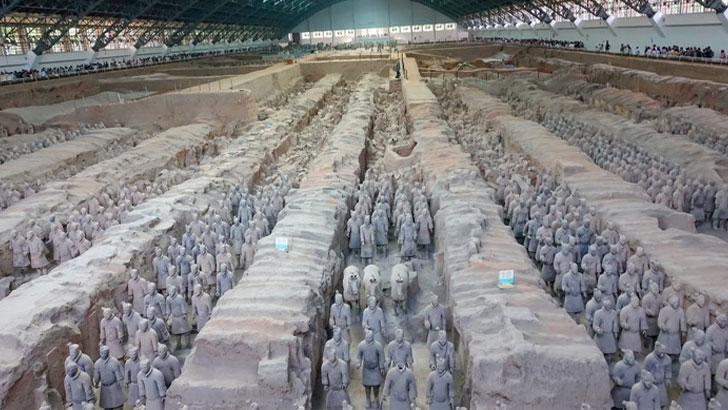 Discovered: 1974
Back in 1974, a Chinese farmer was excavating a hole for his crops when he encountered a hard object with his shovel. Perplexed, he resorted to digging with his hands, only to stumble upon an unexpected sight – what appeared to be a man-shaped sculpture. Alerting the authorities, it was eventually revealed that he had uncovered one of the 8,000 terracotta soldier sculptures, constructed to safeguard the tomb of the first Chinese emperor, located in close proximity. Undoubtedly, this discovery was awe-inspiring.
Discovered: 1974
Back in 1974, a Chinese farmer was excavating a hole for his crops when he encountered a hard object with his shovel. Perplexed, he resorted to digging with his hands, only to stumble upon an unexpected sight – what appeared to be a man-shaped sculpture. Alerting the authorities, it was eventually revealed that he had uncovered one of the 8,000 terracotta soldier sculptures, constructed to safeguard the tomb of the first Chinese emperor, located in close proximity. Undoubtedly, this discovery was awe-inspiring.
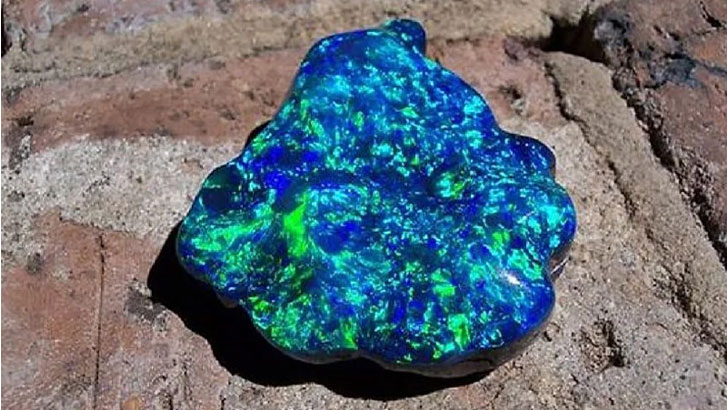 Discovered: 1999
In 1999, a miner from Australia who chose to go by the name “Bobby” stumbled upon a stunning stone amidst a heap of debris that he was on the verge of disposing of. The peculiar blue hue of the rock caught his attention, leading him to keep it as a memento. Fast forward 14 years, Bobby decided to seek the counsel of a professional, who astounded him by revealing that the rock he had found was not just any rock, but a black opal. The revelation became even more astounding when the expert disclosed that the opal Bobby had discovered was worth a staggering $3 million.
Discovered: 1999
In 1999, a miner from Australia who chose to go by the name “Bobby” stumbled upon a stunning stone amidst a heap of debris that he was on the verge of disposing of. The peculiar blue hue of the rock caught his attention, leading him to keep it as a memento. Fast forward 14 years, Bobby decided to seek the counsel of a professional, who astounded him by revealing that the rock he had found was not just any rock, but a black opal. The revelation became even more astounding when the expert disclosed that the opal Bobby had discovered was worth a staggering $3 million.
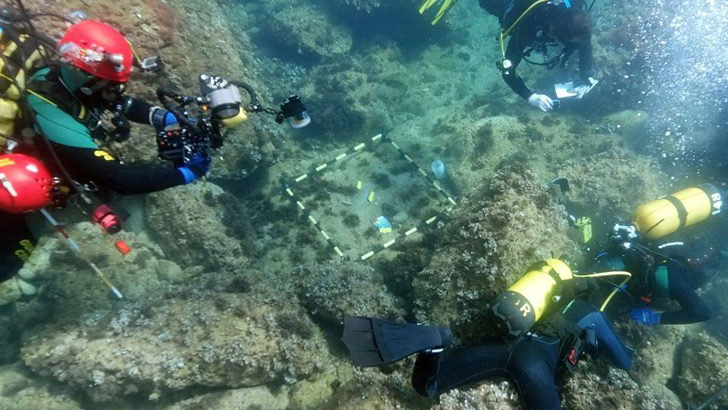 Discovered: 2021
Luis Lens, while snorkeling in Xàbia, Alicante (Spain) in September 2021, stumbled upon a coin on the seafloor. Thinking it was a mere 10 cents, he picked it up. However, when he inspected it, he realized that the coin was not what he had thought it was. Upon closer examination, he discovered that it was a gold coin that dated back to the late 4th and early 5th centuries. After notifying the authorities, experts arrived at the scene and discovered 52 additional coins. Luis’s snorkeling expedition turned out to be an unexpectedly successful treasure hunt!
Discovered: 2021
Luis Lens, while snorkeling in Xàbia, Alicante (Spain) in September 2021, stumbled upon a coin on the seafloor. Thinking it was a mere 10 cents, he picked it up. However, when he inspected it, he realized that the coin was not what he had thought it was. Upon closer examination, he discovered that it was a gold coin that dated back to the late 4th and early 5th centuries. After notifying the authorities, experts arrived at the scene and discovered 52 additional coins. Luis’s snorkeling expedition turned out to be an unexpectedly successful treasure hunt!
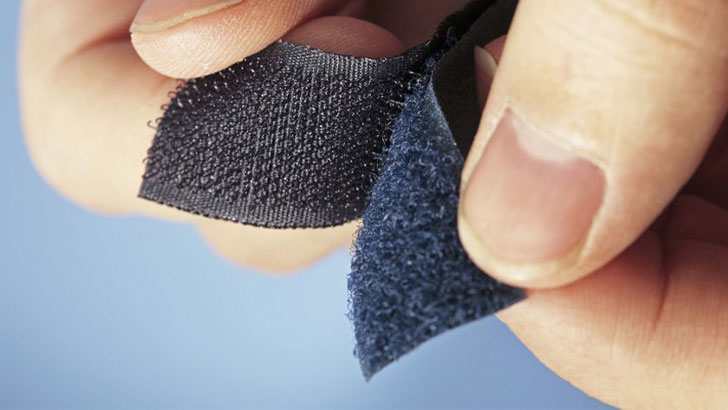 Discovered: 1941
Partially credited to a dog, an invention came to fruition in 1941. Georges de Mestral, a Swiss engineer, ventured into the woods with his pet when he observed that a particular type of plant called “burdock seeds” were clinging to his pants as he traversed through the grass, branches, and foliage. Intrigued by how the seeds adhered to the fabric, Mestral utilized the same principle to devise a novel adhesive system that did not require glue, and thus Velcro was born. By 1955, he had secured the patent for his invention, and it swiftly gained popularity worldwide.
Discovered: 1941
Partially credited to a dog, an invention came to fruition in 1941. Georges de Mestral, a Swiss engineer, ventured into the woods with his pet when he observed that a particular type of plant called “burdock seeds” were clinging to his pants as he traversed through the grass, branches, and foliage. Intrigued by how the seeds adhered to the fabric, Mestral utilized the same principle to devise a novel adhesive system that did not require glue, and thus Velcro was born. By 1955, he had secured the patent for his invention, and it swiftly gained popularity worldwide.
 Discovered: 1905
Popsicles, typically a beloved treat among kids, came to be through a serendipitous incident involving a child. In 1905, a young boy named Frank Epperson was preparing his drink mix by mixing it with water. Due to a momentary distraction, he left the concoction in the garden and returned to the house. The frigid temperature that day caused the drink to freeze, and when Frank ventured back outside a few hours later, he discovered the frozen beverage. As an adult, Frank recollected the incident and decided to manufacture and sell popsicles commercially.
Discovered: 1905
Popsicles, typically a beloved treat among kids, came to be through a serendipitous incident involving a child. In 1905, a young boy named Frank Epperson was preparing his drink mix by mixing it with water. Due to a momentary distraction, he left the concoction in the garden and returned to the house. The frigid temperature that day caused the drink to freeze, and when Frank ventured back outside a few hours later, he discovered the frozen beverage. As an adult, Frank recollected the incident and decided to manufacture and sell popsicles commercially.
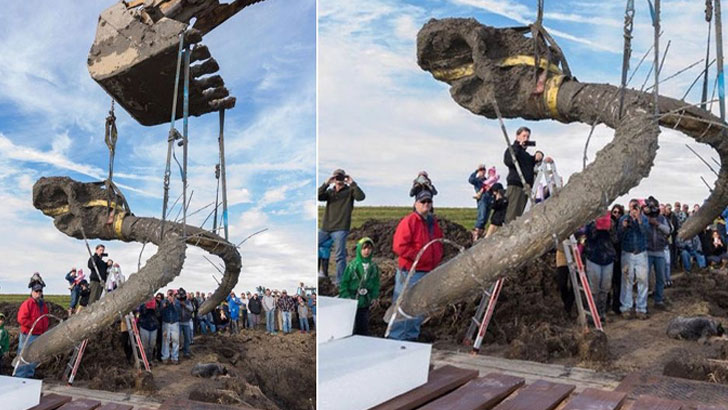 Discovered: 2015
While tending to his soybean field in 2015, a farmer from Michigan by the name of James Bristle came across an object buried in the ground that felt unusually hard. Upon further excavation, James was astonished to find that he had stumbled upon the remains of a colossal mammoth, a discovery that warranted the assistance of authorities. Experts were able to retrieve the creature’s remarkably well-preserved skull and tusks, which had been buried for over 15,000 years. Without a doubt, the unearthing of this ancient animal was a thrilling moment in James’ life.
Discovered: 2015
While tending to his soybean field in 2015, a farmer from Michigan by the name of James Bristle came across an object buried in the ground that felt unusually hard. Upon further excavation, James was astonished to find that he had stumbled upon the remains of a colossal mammoth, a discovery that warranted the assistance of authorities. Experts were able to retrieve the creature’s remarkably well-preserved skull and tusks, which had been buried for over 15,000 years. Without a doubt, the unearthing of this ancient animal was a thrilling moment in James’ life.
 Discovered: 1853
The creation of an extraordinary invention is credited to a cantankerous chef and a persistent patron. In 1853, a cook by the name of George Crum engaged in a heated dispute with a customer who had sent back his plate of fries multiple times, insisting that they were not sufficiently cooked. Fed up with repeatedly preparing the same dish, Crum sought to teach the customer a lesson. He sliced the potatoes as thin as possible, fried them to a crisp, and doused them in salt, assuming that the customer would find them too salty. However, much to his surprise, the customer relished the chips, and the rest of the world soon followed suit.
Discovered: 1853
The creation of an extraordinary invention is credited to a cantankerous chef and a persistent patron. In 1853, a cook by the name of George Crum engaged in a heated dispute with a customer who had sent back his plate of fries multiple times, insisting that they were not sufficiently cooked. Fed up with repeatedly preparing the same dish, Crum sought to teach the customer a lesson. He sliced the potatoes as thin as possible, fried them to a crisp, and doused them in salt, assuming that the customer would find them too salty. However, much to his surprise, the customer relished the chips, and the rest of the world soon followed suit.
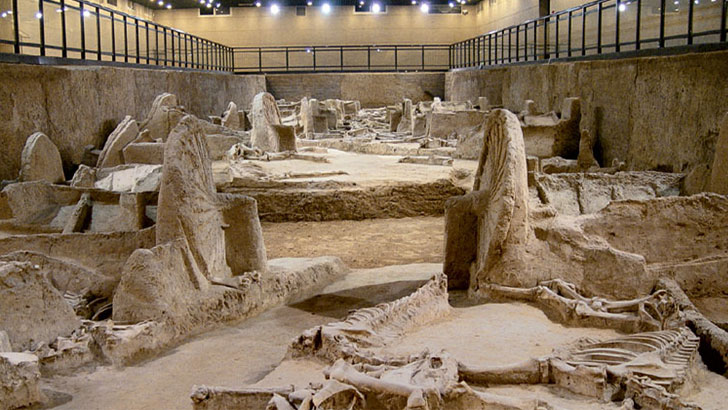 Discovered: 2011
The year 2011 witnessed a remarkable discovery in Luoyang, China: the unearthing of an enormous tomb from the Zhou dynasty. In the vicinity of the tomb, approximately 100 horse skeletons and dozens of chariots were uncovered, most of which had remained impeccably preserved for nearly 3,000 years. Apart from these chariots and horses, the archaeological team found various valuable items such as ceramics, jewelry, and other artifacts in the area, all of which had remained untouched by grave robbers.
Discovered: 2011
The year 2011 witnessed a remarkable discovery in Luoyang, China: the unearthing of an enormous tomb from the Zhou dynasty. In the vicinity of the tomb, approximately 100 horse skeletons and dozens of chariots were uncovered, most of which had remained impeccably preserved for nearly 3,000 years. Apart from these chariots and horses, the archaeological team found various valuable items such as ceramics, jewelry, and other artifacts in the area, all of which had remained untouched by grave robbers.
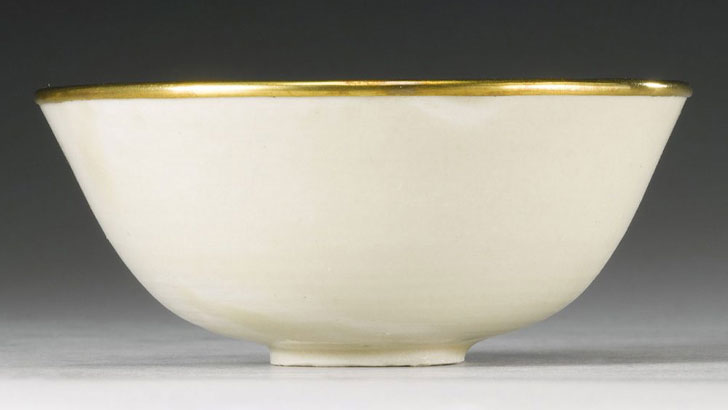 Discovered: 2013
On an ordinary day, a family from New York was browsing through a yard sale when they stumbled upon a beautiful white bowl. Intrigued by its unique appearance, they purchased it for a mere three dollars. Upon closer inspection at home, they realized that the bowl was not just any ordinary item, but a valuable historical artifact: a thousand-year-old Chinese bowl. Deciding to sell their discovery, the family auctioned it off and promptly became millionaires.
Discovered: 2013
On an ordinary day, a family from New York was browsing through a yard sale when they stumbled upon a beautiful white bowl. Intrigued by its unique appearance, they purchased it for a mere three dollars. Upon closer inspection at home, they realized that the bowl was not just any ordinary item, but a valuable historical artifact: a thousand-year-old Chinese bowl. Deciding to sell their discovery, the family auctioned it off and promptly became millionaires.
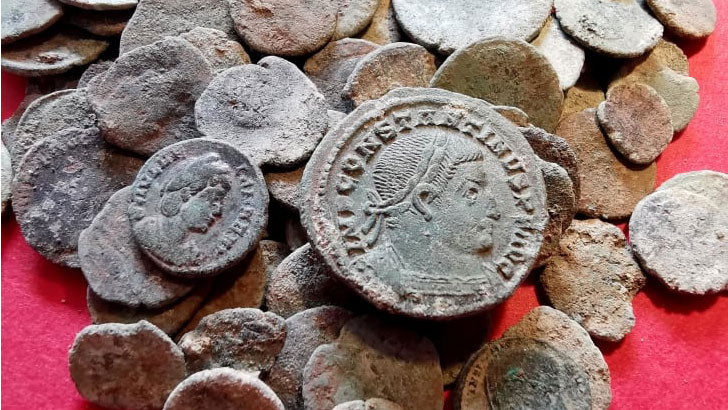 Discovered: 2022
A discovery of 209 Roman coins from the 3rd and 5th centuries AD was made in the cave of La Cuesta de Berció, in Asturias (Spain), thanks to a badger looking for food. The finding began when a resident of the area found several ancient coins lying next to a pile of sand and alerted the authorities. After a group of archaeologists visited the site to evaluate the discovery, it was determined that the animal was responsible for unearthing the coins.
Discovered: 2022
A discovery of 209 Roman coins from the 3rd and 5th centuries AD was made in the cave of La Cuesta de Berció, in Asturias (Spain), thanks to a badger looking for food. The finding began when a resident of the area found several ancient coins lying next to a pile of sand and alerted the authorities. After a group of archaeologists visited the site to evaluate the discovery, it was determined that the animal was responsible for unearthing the coins.
 The individuals who chanced upon these breakthroughs were able to patent them and amass fortunes as a result. This article has compiled some of these chance discoveries for you to peruse. After reading through them, keep your eyes peeled for your own lucky break, which could be just around the corner!
The individuals who chanced upon these breakthroughs were able to patent them and amass fortunes as a result. This article has compiled some of these chance discoveries for you to peruse. After reading through them, keep your eyes peeled for your own lucky break, which could be just around the corner!
Penicillin
 Discovered: 1928
Occasionally, a mistake can result in the loss of one’s job, but on rare occasions, it can actually help save the world. Alexander Fleming, a British physician and scientist, had spent several months researching bacterial cultures. However, during one of his vacations, he inadvertently left the bacterial cultures on his laboratory table. Upon his return to the laboratory, the scientist observed that a fungus belonging to the Penicillium notatum strain had contaminated and destroyed his bacterial cultures. However, this mishap led to the discovery that this particular fungus possessed the ability to inhibit the growth of bacteria. This chance discovery ultimately led to the development of an antibiotic that has since saved countless lives. Fleming’s oversight was rewarded with the Nobel Prize in medicine.
Discovered: 1928
Occasionally, a mistake can result in the loss of one’s job, but on rare occasions, it can actually help save the world. Alexander Fleming, a British physician and scientist, had spent several months researching bacterial cultures. However, during one of his vacations, he inadvertently left the bacterial cultures on his laboratory table. Upon his return to the laboratory, the scientist observed that a fungus belonging to the Penicillium notatum strain had contaminated and destroyed his bacterial cultures. However, this mishap led to the discovery that this particular fungus possessed the ability to inhibit the growth of bacteria. This chance discovery ultimately led to the development of an antibiotic that has since saved countless lives. Fleming’s oversight was rewarded with the Nobel Prize in medicine.
16 Psyche
 Discovered: 1852
Discovered in 1852, the Psyche 16 is an asteroid situated in the asteroid belt between Mars and Jupiter. Scientists have meticulously studied this asteroid for years and have determined that it is primarily composed of iron and nickel. However, what makes this asteroid truly remarkable is its staggering value. The metals contained within it are estimated to be worth a mind-boggling 10 trillion US dollars! If this sum were divided amongst every individual on the planet, we would all become millionaires. Regrettably, the technology required to extract these metals does not currently exist.
Discovered: 1852
Discovered in 1852, the Psyche 16 is an asteroid situated in the asteroid belt between Mars and Jupiter. Scientists have meticulously studied this asteroid for years and have determined that it is primarily composed of iron and nickel. However, what makes this asteroid truly remarkable is its staggering value. The metals contained within it are estimated to be worth a mind-boggling 10 trillion US dollars! If this sum were divided amongst every individual on the planet, we would all become millionaires. Regrettably, the technology required to extract these metals does not currently exist.
Rubik’s Cube
 Discovered: 1974
The Rubik’s cube is the world’s top-selling puzzle, yet it was not originally designed as a toy. Its inventor, Erno Rubik, was an architecture professor who constructed the puzzle as a visual aid to teach his students about spatial concepts. After each class, Rubik noticed that his students would attempt to return the cube to its initial position, leading him to refine his invention. He subsequently patented it, and within three years, the Rubik’s cube was being sold worldwide as a toy.
Discovered: 1974
The Rubik’s cube is the world’s top-selling puzzle, yet it was not originally designed as a toy. Its inventor, Erno Rubik, was an architecture professor who constructed the puzzle as a visual aid to teach his students about spatial concepts. After each class, Rubik noticed that his students would attempt to return the cube to its initial position, leading him to refine his invention. He subsequently patented it, and within three years, the Rubik’s cube was being sold worldwide as a toy.
King’s Coins
 Discovered: 2019
Adam Staples and Lisa Grace are a couple who enjoy metal detecting as a hobby. During a walk in Somerset, England, they stumbled upon something that far exceeded their expectations: a medieval treasure. The treasure they unearthed consisted of 2,751 coins that were over a thousand years old and had previously belonged to King Harold II. The British Museum appraised their discovery to be worth 6 million euros. Although Adam and Lisa had to relinquish the coins to the museum, they were able to claim 50% of the proceeds from the transaction.
Discovered: 2019
Adam Staples and Lisa Grace are a couple who enjoy metal detecting as a hobby. During a walk in Somerset, England, they stumbled upon something that far exceeded their expectations: a medieval treasure. The treasure they unearthed consisted of 2,751 coins that were over a thousand years old and had previously belonged to King Harold II. The British Museum appraised their discovery to be worth 6 million euros. Although Adam and Lisa had to relinquish the coins to the museum, they were able to claim 50% of the proceeds from the transaction.
Teflon
 Discovered: 1838
Teflon is a ubiquitous material found in most kitchens, yet it was not originally intended for use as a non-stick coating for cookware. The material’s origins trace back to when chemist Roy Plunkett was commissioned to develop a non-toxic refrigerant chemical. One day, while allowing a substance to settle to create a gas, Plunkett discovered that it had transformed into a highly slippery substance the next day. This new material piqued the interest of French engineer Marc Gregoire, who blended it with aluminum to produce kitchen utensils.
Discovered: 1838
Teflon is a ubiquitous material found in most kitchens, yet it was not originally intended for use as a non-stick coating for cookware. The material’s origins trace back to when chemist Roy Plunkett was commissioned to develop a non-toxic refrigerant chemical. One day, while allowing a substance to settle to create a gas, Plunkett discovered that it had transformed into a highly slippery substance the next day. This new material piqued the interest of French engineer Marc Gregoire, who blended it with aluminum to produce kitchen utensils.
Super Glue
 Discovered: 1942
Glue, like every other item on this list, was originally created for a completely different purpose. Engineer Harry Coover, employed by Kodak, was attempting to develop a transparent plastic material. However, during his experiments, he stumbled upon a remarkably sticky substance that rapidly solidified when exposed to air. This substance was initially employed to fuse fractured bones, but its use on human bodies was eventually prohibited by authorities. As a result, people began utilizing it to repair damaged objects around their homes.
Discovered: 1942
Glue, like every other item on this list, was originally created for a completely different purpose. Engineer Harry Coover, employed by Kodak, was attempting to develop a transparent plastic material. However, during his experiments, he stumbled upon a remarkably sticky substance that rapidly solidified when exposed to air. This substance was initially employed to fuse fractured bones, but its use on human bodies was eventually prohibited by authorities. As a result, people began utilizing it to repair damaged objects around their homes.
Microwave
 Discovered: 1945
The creation of the microwave oven was an accidental discovery that originated from a scientist named Percy Spencer who was working on enhancing the functionality of a radar. During his work with magnetons, which are devices used to measure distances, directions, and speeds, Spencer had a chocolate bar in his pocket that he intended to have for lunch. However, the chocolate bar melted when it got too close to the magneton. Intrigued by this, Spencer tested the effect on other foods, which led to the invention of the microwave oven that is commonly used today.
Discovered: 1945
The creation of the microwave oven was an accidental discovery that originated from a scientist named Percy Spencer who was working on enhancing the functionality of a radar. During his work with magnetons, which are devices used to measure distances, directions, and speeds, Spencer had a chocolate bar in his pocket that he intended to have for lunch. However, the chocolate bar melted when it got too close to the magneton. Intrigued by this, Spencer tested the effect on other foods, which led to the invention of the microwave oven that is commonly used today.
75 lb. Pearl
 Discovered: 2006
Back in 2006, a Filipino fisherman’s life took an unexpected turn when his fishing expedition yielded something far beyond his expectations. Instead of a fish, he caught a colossal clam that contained a pearl weighing a whopping 75 pounds. This discovery remains the most massive pearl on record to date. The fortunate fisherman sought out experts, who estimated the pearl’s worth to be a staggering 96 million dollars. Strangely enough, the man initially declined the offer. However, several years later, he had a change of heart after his home was destroyed in a fire.
Discovered: 2006
Back in 2006, a Filipino fisherman’s life took an unexpected turn when his fishing expedition yielded something far beyond his expectations. Instead of a fish, he caught a colossal clam that contained a pearl weighing a whopping 75 pounds. This discovery remains the most massive pearl on record to date. The fortunate fisherman sought out experts, who estimated the pearl’s worth to be a staggering 96 million dollars. Strangely enough, the man initially declined the offer. However, several years later, he had a change of heart after his home was destroyed in a fire.
Palmer Union Oil Shares
 Discovered: 2008
While most individuals peruse yard sales purely out of interest, with little hope of unearthing anything valuable, Tony Marohn’s experience was vastly different. Mr. Marohn purchased a box of aged documents for a meager sum of $5, only to discover that the contents were worth far more. Among the papers was an invoice for 1,625 shares of Palmer Union Oil, equating to 1.8 million Coca-Cola shares. The value of these shares is estimated to be around $130 million, all obtained for just $5!
Discovered: 2008
While most individuals peruse yard sales purely out of interest, with little hope of unearthing anything valuable, Tony Marohn’s experience was vastly different. Mr. Marohn purchased a box of aged documents for a meager sum of $5, only to discover that the contents were worth far more. Among the papers was an invoice for 1,625 shares of Palmer Union Oil, equating to 1.8 million Coca-Cola shares. The value of these shares is estimated to be around $130 million, all obtained for just $5!
Slinky
 Discovered: 1943
The famous toy known as “Slinky” was not initially designed as a plaything. The origins of this spring-like toy date back to 1943 when a naval engineer named Richard T. James was striving to create springs that could stabilize navigation equipment in turbulent waters. While experimenting with different springs, one of them fell off a shelf, flipped over itself, landed on a book, and then gracefully fell to the ground. James demonstrated this occurrence to children in his locality, who were thrilled, and thus the concept of the toy came into existence.
Discovered: 1943
The famous toy known as “Slinky” was not initially designed as a plaything. The origins of this spring-like toy date back to 1943 when a naval engineer named Richard T. James was striving to create springs that could stabilize navigation equipment in turbulent waters. While experimenting with different springs, one of them fell off a shelf, flipped over itself, landed on a book, and then gracefully fell to the ground. James demonstrated this occurrence to children in his locality, who were thrilled, and thus the concept of the toy came into existence.
Coca-Cola
 Discovered: 1893
It may be surprising, but the most widely consumed soft drink globally, and the corporation that has evolved into one of the most lucrative entities on the planet, came into existence by chance. It all commenced when pharmacist John S. Pemberton attempted to invent a syrup that would boost energy levels and alleviate digestive issues. After formulating the perfect recipe, Pemberton began distributing it. However, consumers began combining the syrup with carbonated water to enhance its taste, giving rise to Coca-Cola. The recipe has since been altered over time to achieve the ideal flavor, and this “mishap” has generated billions of dollars.
Discovered: 1893
It may be surprising, but the most widely consumed soft drink globally, and the corporation that has evolved into one of the most lucrative entities on the planet, came into existence by chance. It all commenced when pharmacist John S. Pemberton attempted to invent a syrup that would boost energy levels and alleviate digestive issues. After formulating the perfect recipe, Pemberton began distributing it. However, consumers began combining the syrup with carbonated water to enhance its taste, giving rise to Coca-Cola. The recipe has since been altered over time to achieve the ideal flavor, and this “mishap” has generated billions of dollars.
Ancient Coins
 Discovered: 2007
A cluster of prankish youngsters made an unexpected revelation while playing in their Pennsylvania neighborhood. The children made the decision to venture into an abandoned house, where they stumbled upon a few coins lying on the floor. Upon returning home, they recounted their findings to their parents. Intrigued, the parents visited the deserted house and tore down one of its walls, leading them to discover hundreds of coins. As some of the coins were quite ancient, the value of this discovery skyrocketed to $200,000. We can only hope that the children received a share of the profits!
Discovered: 2007
A cluster of prankish youngsters made an unexpected revelation while playing in their Pennsylvania neighborhood. The children made the decision to venture into an abandoned house, where they stumbled upon a few coins lying on the floor. Upon returning home, they recounted their findings to their parents. Intrigued, the parents visited the deserted house and tore down one of its walls, leading them to discover hundreds of coins. As some of the coins were quite ancient, the value of this discovery skyrocketed to $200,000. We can only hope that the children received a share of the profits!
12 lb. Gold Chunk
 Discovered: 2013
This account concerns a farmer residing in the Australian city of Ballarat. One day, while going out for a stroll, he decided to bring his metal detector along, although he didn’t hold high hopes of uncovering anything valuable. However, his fortune exceeded his expectations in a significant way. Initially, the farmer discovered small chunks of pure gold scattered on the ground. Overjoyed, he began to dig and was astonished to uncover a 12-pound gold nugget. The metal was appraised at $315,000, transforming the fortunate man’s life completely.
Discovered: 2013
This account concerns a farmer residing in the Australian city of Ballarat. One day, while going out for a stroll, he decided to bring his metal detector along, although he didn’t hold high hopes of uncovering anything valuable. However, his fortune exceeded his expectations in a significant way. Initially, the farmer discovered small chunks of pure gold scattered on the ground. Overjoyed, he began to dig and was astonished to uncover a 12-pound gold nugget. The metal was appraised at $315,000, transforming the fortunate man’s life completely.
Declaration of Independence
 Discovered: 1991
One man was captivated by a painting at a garage sale and decided to purchase it for his home. With a price tag of only 4 dollars, it seemed like a steal. Yet, this acquisition held far greater significance than a mere living room decoration. While replacing the frame, the man uncovered an official copy of the United States Declaration of Independence, one of only 25 in existence. He subsequently sold the document at an auction for a staggering $2.4 million, a sum that likely provided him with ample means to purchase another piece of artwork.
Discovered: 1991
One man was captivated by a painting at a garage sale and decided to purchase it for his home. With a price tag of only 4 dollars, it seemed like a steal. Yet, this acquisition held far greater significance than a mere living room decoration. While replacing the frame, the man uncovered an official copy of the United States Declaration of Independence, one of only 25 in existence. He subsequently sold the document at an auction for a staggering $2.4 million, a sum that likely provided him with ample means to purchase another piece of artwork.
Treasure Chest
 Discovered: 1992
In 1992, a farmer from England named Peter Whatling lost his hammer and decided to use his friend’s metal detector to find it. During his search, he stumbled upon a wooden box containing gold jewelry and numerous coins worth a staggering $15 million. However, he couldn’t keep the treasure and handed it over to the British Museum. Fortunately, he received a compensation of $2.3 million for his discovery, which he shared with his friend.
Discovered: 1992
In 1992, a farmer from England named Peter Whatling lost his hammer and decided to use his friend’s metal detector to find it. During his search, he stumbled upon a wooden box containing gold jewelry and numerous coins worth a staggering $15 million. However, he couldn’t keep the treasure and handed it over to the British Museum. Fortunately, he received a compensation of $2.3 million for his discovery, which he shared with his friend.
Bubble Wrap
 Discovered: 1957
In 1957, Al Fielding and Marc Chavannes attempted to create a unique version of wallpaper that had an embossed texture. However, their idea did not gain much traction in the market. Two years later, while flying, Chavannes had an epiphany that the textured paper could be used to safeguard delicate items during transit. As their idea gained popularity, IBM became one of the first organizations to utilize bubble wrap for packaging. The invention by Fielding and Chavannes proved invaluable in protecting the first-ever computers transported.
Discovered: 1957
In 1957, Al Fielding and Marc Chavannes attempted to create a unique version of wallpaper that had an embossed texture. However, their idea did not gain much traction in the market. Two years later, while flying, Chavannes had an epiphany that the textured paper could be used to safeguard delicate items during transit. As their idea gained popularity, IBM became one of the first organizations to utilize bubble wrap for packaging. The invention by Fielding and Chavannes proved invaluable in protecting the first-ever computers transported.
Martin Johnson Heade Painting
 Discovered: 1999
Back in 1999, a resident of Indiana, USA, stumbled upon an astonishing discovery. While playing a board game that featured a card with a painting, he noticed the striking resemblance of the artwork to a piece hanging on his wall. This sparked his curiosity, and he wondered whether his painting could be an original work by the renowned artist, Martin Johnson Heade. The man contacted an expert for a professional opinion, and to his surprise, the painting was confirmed to be an authentic piece by Heade. The artwork went on to sell for a whopping 1.25 million dollars, and all this while it had been hanging in his house.
Discovered: 1999
Back in 1999, a resident of Indiana, USA, stumbled upon an astonishing discovery. While playing a board game that featured a card with a painting, he noticed the striking resemblance of the artwork to a piece hanging on his wall. This sparked his curiosity, and he wondered whether his painting could be an original work by the renowned artist, Martin Johnson Heade. The man contacted an expert for a professional opinion, and to his surprise, the painting was confirmed to be an authentic piece by Heade. The artwork went on to sell for a whopping 1.25 million dollars, and all this while it had been hanging in his house.
Fabergé Figure
 Discovered: 2013
George and Betty Davis, a couple from New York, were inspired one day to give their attic a thorough cleaning. Amidst a collection of miscellaneous boxes and clutter, they stumbled upon a figure that appeared to have some value. It was adorned with exquisite embellishments and resembled a Russian guard. Seeking expert advice, George and Betty discovered that the figure was an original piece by the renowned Russian jeweler, Fabergé. The figure was later auctioned off for a staggering $5.2 million. The incredible tale of George and Betty Davis serves as a testament to the hidden treasures that can be unearthed during a long-overdue attic cleaning.
Discovered: 2013
George and Betty Davis, a couple from New York, were inspired one day to give their attic a thorough cleaning. Amidst a collection of miscellaneous boxes and clutter, they stumbled upon a figure that appeared to have some value. It was adorned with exquisite embellishments and resembled a Russian guard. Seeking expert advice, George and Betty discovered that the figure was an original piece by the renowned Russian jeweler, Fabergé. The figure was later auctioned off for a staggering $5.2 million. The incredible tale of George and Betty Davis serves as a testament to the hidden treasures that can be unearthed during a long-overdue attic cleaning.
Corn Flakes
 Discovered: 1898
Dr. John Harvey Kellogg is credited as the creator of Corn Flakes. During his early career, he established a sanatorium and focused on improving the digestion of his patients. Seeking an easy, healthy, and affordable meal option, Kellogg began experimenting with various ingredients. One day, while cooking wheat, he accidentally left it in the oven overnight. The next day, he re-baked it and decided to serve it to his patients. To his delight, they loved it! This unexpected creation led to the development of the now-famous Corn Flakes cereal.
Discovered: 1898
Dr. John Harvey Kellogg is credited as the creator of Corn Flakes. During his early career, he established a sanatorium and focused on improving the digestion of his patients. Seeking an easy, healthy, and affordable meal option, Kellogg began experimenting with various ingredients. One day, while cooking wheat, he accidentally left it in the oven overnight. The next day, he re-baked it and decided to serve it to his patients. To his delight, they loved it! This unexpected creation led to the development of the now-famous Corn Flakes cereal.
Pacemaker
 Discovered: 1956
The pacemaker, a groundbreaking piece of medical technology, has an unexpected origin story. In 1956, inventor Wilson Greatbatch set out to create an audio recorder that could capture the sound of a beating heart. However, the device he developed turned out to be more suited to regulating the heart rate than recording sounds. Greatbatch discussed his discovery with surgeon William Chardack, who went on to implant the world’s first pacemaker in a human in 1960. Despite its unintentional creation, the pacemaker has since become a vital medical device that has saved countless lives.
Discovered: 1956
The pacemaker, a groundbreaking piece of medical technology, has an unexpected origin story. In 1956, inventor Wilson Greatbatch set out to create an audio recorder that could capture the sound of a beating heart. However, the device he developed turned out to be more suited to regulating the heart rate than recording sounds. Greatbatch discussed his discovery with surgeon William Chardack, who went on to implant the world’s first pacemaker in a human in 1960. Despite its unintentional creation, the pacemaker has since become a vital medical device that has saved countless lives.
Early Mona Lisa
 Discovered: 1913
The Mona Lisa Foundation made an incredible revelation in 2012 when it announced the existence of a second version of Leonardo Da Vinci’s iconic painting, La Gioconda. The discovery can be traced back to 1913, when a London-based art enthusiast named Hugh Blaker unknowingly purchased the masterpiece. For years, the painting hung on the wall of a London apartment, with its owners unaware of its true worth. The artwork, also known as the Second Mona Lisa, changed hands several times over the years and eventually found its way into a Swiss bank vault for 30 years. After being rediscovered in 2008, extensive studies were conducted to confirm its authenticity. This discovery has proven to be invaluable, suggesting that there may be more undiscovered works of art by Da Vinci waiting to be found.
Discovered: 1913
The Mona Lisa Foundation made an incredible revelation in 2012 when it announced the existence of a second version of Leonardo Da Vinci’s iconic painting, La Gioconda. The discovery can be traced back to 1913, when a London-based art enthusiast named Hugh Blaker unknowingly purchased the masterpiece. For years, the painting hung on the wall of a London apartment, with its owners unaware of its true worth. The artwork, also known as the Second Mona Lisa, changed hands several times over the years and eventually found its way into a Swiss bank vault for 30 years. After being rediscovered in 2008, extensive studies were conducted to confirm its authenticity. This discovery has proven to be invaluable, suggesting that there may be more undiscovered works of art by Da Vinci waiting to be found.
Duct Tape
 Discovered: 1941
During World War II, the US Army requested Johnson & Johnson to develop a material that could protect their ammunition from moisture caused by water and mud. The company responded by creating a tape composed of water-resistant plastic and equipped with glue on both sides to secure objects. This tape proved to be very useful, so Johnson & Johnson decided to make it commercially available. This product, known as duct tape, has become one of the most ubiquitous tools used in various industries today.
Discovered: 1941
During World War II, the US Army requested Johnson & Johnson to develop a material that could protect their ammunition from moisture caused by water and mud. The company responded by creating a tape composed of water-resistant plastic and equipped with glue on both sides to secure objects. This tape proved to be very useful, so Johnson & Johnson decided to make it commercially available. This product, known as duct tape, has become one of the most ubiquitous tools used in various industries today.
Roman Loot
 Discovered: 2016
Underwater archeology experts made a remarkable discovery in 2016 in Caesarea, on Israel’s Mediterranean coast. The discovery comprised hundreds of Roman-era coins, bronze sculptures, and other objects. The archeologists confirmed that the artifacts were around 1,600 years old and were incredibly well-preserved. This discovery is of immense historical value because it is the largest collection of artifacts found in the sea in the past thirty years.
Discovered: 2016
Underwater archeology experts made a remarkable discovery in 2016 in Caesarea, on Israel’s Mediterranean coast. The discovery comprised hundreds of Roman-era coins, bronze sculptures, and other objects. The archeologists confirmed that the artifacts were around 1,600 years old and were incredibly well-preserved. This discovery is of immense historical value because it is the largest collection of artifacts found in the sea in the past thirty years.
Artificial Sweeteners
 Discovered: 1829
Russian chemist Constantin Fahlberg stumbled upon the invention of saccharin through an unhygienic mistake. While researching coal tar derivatives, he interrupted his work for lunch without washing his hands. Upon eating, Fahlberg noticed a surprisingly sweet taste in his bread, which had come into contact with his experimental substance. Unknowingly, he had ingested his own discovery. Fortunately, the chemicals were non-toxic, and Fahlberg’s oversight led to the profitable discovery of saccharin.
Discovered: 1829
Russian chemist Constantin Fahlberg stumbled upon the invention of saccharin through an unhygienic mistake. While researching coal tar derivatives, he interrupted his work for lunch without washing his hands. Upon eating, Fahlberg noticed a surprisingly sweet taste in his bread, which had come into contact with his experimental substance. Unknowingly, he had ingested his own discovery. Fortunately, the chemicals were non-toxic, and Fahlberg’s oversight led to the profitable discovery of saccharin.
Matches
 Discovered:1826
In 1826, while working on a chemical project, British pharmacist John Walker accidentally discovered the first match. As he stirred the mixture with a stick, he noticed a tear-shaped substance sticking to one end. Attempting to remove it, he scraped the stick against a surface and was amazed when sparks and flames ignited. Despite his significant breakthrough, Walker chose not to patent the invention, wanting to share it with the world. Unfortunately, someone else filed for the patent, taking credit for and profiting from Walker’s invention.
Discovered:1826
In 1826, while working on a chemical project, British pharmacist John Walker accidentally discovered the first match. As he stirred the mixture with a stick, he noticed a tear-shaped substance sticking to one end. Attempting to remove it, he scraped the stick against a surface and was amazed when sparks and flames ignited. Despite his significant breakthrough, Walker chose not to patent the invention, wanting to share it with the world. Unfortunately, someone else filed for the patent, taking credit for and profiting from Walker’s invention.
Zumba
 Discovered: 1990
The origins of this popular dance can be traced back to a comical mistake. Beto Pérez, a Colombian dance instructor, was accustomed to teaching choreographed routines that he had meticulously planned and rehearsed in advance. However, one fateful day, Beto forgot to bring the CD that he typically used for his classes. Faced with this dilemma, he decided to improvise. He grabbed a Latin music CD that he usually listened to while driving and played it for his class, spontaneously creating dance moves for them to follow. To his surprise, his students were thrilled with the impromptu routine, and Beto’s improvisation eventually evolved into one of the most popular and widespread fitness disciplines in the world.
Discovered: 1990
The origins of this popular dance can be traced back to a comical mistake. Beto Pérez, a Colombian dance instructor, was accustomed to teaching choreographed routines that he had meticulously planned and rehearsed in advance. However, one fateful day, Beto forgot to bring the CD that he typically used for his classes. Faced with this dilemma, he decided to improvise. He grabbed a Latin music CD that he usually listened to while driving and played it for his class, spontaneously creating dance moves for them to follow. To his surprise, his students were thrilled with the impromptu routine, and Beto’s improvisation eventually evolved into one of the most popular and widespread fitness disciplines in the world.
Play-Doh
 Discovered: 1949
Play-Doh, a beloved toy for generations, was originally created as a product for cleaning wallpaper. The creators soon discovered that it could also be used for molding, alongside its cleaning properties. A school teacher later found out about this malleable substance and introduced it to her students for fun activities. After confirming its safety, Play-Doh became a popular children’s toy. In 2003, the Toy Association recognized it as one of the greatest toys of the century.
Discovered: 1949
Play-Doh, a beloved toy for generations, was originally created as a product for cleaning wallpaper. The creators soon discovered that it could also be used for molding, alongside its cleaning properties. A school teacher later found out about this malleable substance and introduced it to her students for fun activities. After confirming its safety, Play-Doh became a popular children’s toy. In 2003, the Toy Association recognized it as one of the greatest toys of the century.
16th Century Gold Pendant
 Discovered: 2010
In Essex, England, back in 2010, a three-year-old boy named James Hyatt was playing with a metal detector on a farm when he stumbled upon something unusual. The tool led him to a small metallic object that didn’t look like a toy. It turned out to be a 16th-century gold pendant, valued at $4.4 million by specialists. The pendant was later sold for that amount, and hopefully, little James received his fair share of the treasure!
Discovered: 2010
In Essex, England, back in 2010, a three-year-old boy named James Hyatt was playing with a metal detector on a farm when he stumbled upon something unusual. The tool led him to a small metallic object that didn’t look like a toy. It turned out to be a 16th-century gold pendant, valued at $4.4 million by specialists. The pendant was later sold for that amount, and hopefully, little James received his fair share of the treasure!
X-Rays
 Discovered: 1895
The impact of X-rays on modern medicine is immeasurable. Surprisingly, this groundbreaking invention was not the result of years of research, but rather a serendipitous discovery. One day, while experimenting with a cathode ray tube, German physicist Wilhelm Roentgen noticed that the rays emitted from the tube produced light on a screen in the room. When he attempted to block the light, he saw his own bones projected onto the surface of the screen. After some tweaking and refining, Roentgen presented his findings to the scientific community, ultimately earning the Nobel Prize in Physics in 1901.
Discovered: 1895
The impact of X-rays on modern medicine is immeasurable. Surprisingly, this groundbreaking invention was not the result of years of research, but rather a serendipitous discovery. One day, while experimenting with a cathode ray tube, German physicist Wilhelm Roentgen noticed that the rays emitted from the tube produced light on a screen in the room. When he attempted to block the light, he saw his own bones projected onto the surface of the screen. After some tweaking and refining, Roentgen presented his findings to the scientific community, ultimately earning the Nobel Prize in Physics in 1901.
1,000+ Gold Coins from 1890
 Discovered: 2013
Without the aid of a beloved family member, this discovery would not have been possible. One day in 2013, a couple from Sierra Nevada, California, was out for a walk with their dog, just like any other day. But on this particular occasion, the family noticed something protruding from the dirt on the trail, so they stopped to investigate. To their surprise, they found several tins containing 1,373 gold coins from 1890. Experts estimated the value of the treasure to be $10 million. Despite the extensive media coverage surrounding this discovery, the couple (and their dog) chose to remain anonymous.
Discovered: 2013
Without the aid of a beloved family member, this discovery would not have been possible. One day in 2013, a couple from Sierra Nevada, California, was out for a walk with their dog, just like any other day. But on this particular occasion, the family noticed something protruding from the dirt on the trail, so they stopped to investigate. To their surprise, they found several tins containing 1,373 gold coins from 1890. Experts estimated the value of the treasure to be $10 million. Despite the extensive media coverage surrounding this discovery, the couple (and their dog) chose to remain anonymous.
Ice Cream Cones
 Discovered: 1901
Ice cream has been a popular treat for centuries, but it wasn’t until 1901 that it was served in ice cream cones. At a fair that year, an ice cream vendor was doing brisk business while the waffle stand next to it was struggling to make sales. Someone came up with the clever idea to roll up a waffle and place a scoop of ice cream on top, and this simple innovation revolutionized the world of frozen desserts. Not only did it boost waffle sales, but it also created one of the most beloved treats of the 20th century.
Discovered: 1901
Ice cream has been a popular treat for centuries, but it wasn’t until 1901 that it was served in ice cream cones. At a fair that year, an ice cream vendor was doing brisk business while the waffle stand next to it was struggling to make sales. Someone came up with the clever idea to roll up a waffle and place a scoop of ice cream on top, and this simple innovation revolutionized the world of frozen desserts. Not only did it boost waffle sales, but it also created one of the most beloved treats of the 20th century.
Jackson Pollock Painting
 Discovered: 1995
In 1995, Teri Horton, a California truck driver, stumbled upon a painting at a garage sale for $5, unknowingly changing her life forever. At first, she planned to gift the painting to a friend, but a neighbor pointed out that it resembled the works of artist Jackson Pollock. Curious, Teri consulted a specialist who confirmed the painting’s authenticity. Despite receiving numerous offers for the painting, Teri turned them down, convinced that she could fetch an even higher price.
Discovered: 1995
In 1995, Teri Horton, a California truck driver, stumbled upon a painting at a garage sale for $5, unknowingly changing her life forever. At first, she planned to gift the painting to a friend, but a neighbor pointed out that it resembled the works of artist Jackson Pollock. Curious, Teri consulted a specialist who confirmed the painting’s authenticity. Despite receiving numerous offers for the painting, Teri turned them down, convinced that she could fetch an even higher price.
Pizza.com
 Discovered: 1994
Chris Clark’s patience paid off when he finally sold the domain “pizza.com” for a staggering $2.6 million in 2008, fourteen years after he registered it as a marketing strategy. His hope was that someday, someone would want to pay a considerable sum to acquire the website address. He received multiple offers before finally accepting the highest one.
Discovered: 1994
Chris Clark’s patience paid off when he finally sold the domain “pizza.com” for a staggering $2.6 million in 2008, fourteen years after he registered it as a marketing strategy. His hope was that someday, someone would want to pay a considerable sum to acquire the website address. He received multiple offers before finally accepting the highest one.
Cincinnati Reds Baseball Card
 Discovered: 2009
While cleaning old boxes in her storage one day, 72-year-old Bernice Gallego stumbled upon a baseball card that caught her eye. Thinking it might fetch her a few bucks, she decided to list it on eBay for a modest $10. However, one of her friends advised her to withdraw the offer as the card could be worth much more. As it turned out, the Cincinnati Reds team card, made in 1869, was one of the oldest baseball cards in existence. Bernice’s decision to heed her friend’s advice proved to be lucrative, as she eventually sold the card for a whopping $75,000.
Discovered: 2009
While cleaning old boxes in her storage one day, 72-year-old Bernice Gallego stumbled upon a baseball card that caught her eye. Thinking it might fetch her a few bucks, she decided to list it on eBay for a modest $10. However, one of her friends advised her to withdraw the offer as the card could be worth much more. As it turned out, the Cincinnati Reds team card, made in 1869, was one of the oldest baseball cards in existence. Bernice’s decision to heed her friend’s advice proved to be lucrative, as she eventually sold the card for a whopping $75,000.
5 Gold Bars
 Discovered: 2017
Nick Mead is a military vehicle collector with a unique hobby of acquiring tanks. In 2017, he purchased another tank to add to his collection, with the intention of documenting its restoration process on the internet. During the filming, he made an unexpected discovery: five bars of pure gold inside the tank, each weighing over ten pounds. The value of Nick’s find was later estimated at $2.7 million, a considerable sum compared to the $45,000 he spent on the tank.
Discovered: 2017
Nick Mead is a military vehicle collector with a unique hobby of acquiring tanks. In 2017, he purchased another tank to add to his collection, with the intention of documenting its restoration process on the internet. During the filming, he made an unexpected discovery: five bars of pure gold inside the tank, each weighing over ten pounds. The value of Nick’s find was later estimated at $2.7 million, a considerable sum compared to the $45,000 he spent on the tank.
Oldest Mummy Ever
 Discovered: 1991
Two German climbers had a spine-chilling experience when they stumbled upon a mysterious human-shaped object on the ground of a mountain in 1991. The climbers immediately notified the authorities, and upon inspection, the officials suspected that this discovery would be historic. The climbers had discovered the famous Ötzi, now known as the oldest mummy ever found in Europe. It is believed that Ötzi died in 3255 BC. This was an invaluable discovery, and it was undoubtedly worth the fright that the hikers went through.
Discovered: 1991
Two German climbers had a spine-chilling experience when they stumbled upon a mysterious human-shaped object on the ground of a mountain in 1991. The climbers immediately notified the authorities, and upon inspection, the officials suspected that this discovery would be historic. The climbers had discovered the famous Ötzi, now known as the oldest mummy ever found in Europe. It is believed that Ötzi died in 3255 BC. This was an invaluable discovery, and it was undoubtedly worth the fright that the hikers went through.
Pet Rock
 Discovered: 1975
Gary Dahl’s strange idea of the perfect pet turned out to be a successful business venture. One night, while joking with his friends, Dahl suggested that a rock would be an ideal pet since it wouldn’t need to be fed or cleaned, and it couldn’t die or run away. Surprisingly, his joke turned into reality when he created a product called “Pet Rock.” The package included a rock, along with decorations and accessories. Despite the unlikely concept, Dahl sold an impressive 1.5 million units, earning a staggering $6 million.
Discovered: 1975
Gary Dahl’s strange idea of the perfect pet turned out to be a successful business venture. One night, while joking with his friends, Dahl suggested that a rock would be an ideal pet since it wouldn’t need to be fed or cleaned, and it couldn’t die or run away. Surprisingly, his joke turned into reality when he created a product called “Pet Rock.” The package included a rock, along with decorations and accessories. Despite the unlikely concept, Dahl sold an impressive 1.5 million units, earning a staggering $6 million.
”Preparation to Escape to Egypt”
 Discovered: 2006
In 2006, a student from Berlin went to a flea market hoping to find an affordable sofa. After browsing for a while, he eventually purchased a used sofa bed for $215. Upon arriving home and examining his purchase more closely, he discovered an unexpected treasure hidden within the furniture: a painting. But this was no ordinary painting; it was a work of art titled “Preparation to Escape to Egypt.” The stunning piece ended up being sold at an auction for a whopping $27,000. The fortunate student who stumbled upon the valuable painting chose to remain anonymous.
Discovered: 2006
In 2006, a student from Berlin went to a flea market hoping to find an affordable sofa. After browsing for a while, he eventually purchased a used sofa bed for $215. Upon arriving home and examining his purchase more closely, he discovered an unexpected treasure hidden within the furniture: a painting. But this was no ordinary painting; it was a work of art titled “Preparation to Escape to Egypt.” The stunning piece ended up being sold at an auction for a whopping $27,000. The fortunate student who stumbled upon the valuable painting chose to remain anonymous.
Fireworks
 Discovered: 22 A.D.
Several theories surround the origin of fireworks, but one of the most popular stories dates back more than 2000 years to China. Legend has it that a Chinese cook was mixing sulfuric acid, saltpeter, and charcoal in an attempt to create a fire in the open air. However, the dangerous combination resulted in an explosion. To keep evil spirits away, the cook decided to place these ingredients inside a bamboo stick, which resulted in the first firework. Nowadays, people enjoy fireworks to celebrate special occasions, and the only side effect is the occasional fright they may cause to pets.
Discovered: 22 A.D.
Several theories surround the origin of fireworks, but one of the most popular stories dates back more than 2000 years to China. Legend has it that a Chinese cook was mixing sulfuric acid, saltpeter, and charcoal in an attempt to create a fire in the open air. However, the dangerous combination resulted in an explosion. To keep evil spirits away, the cook decided to place these ingredients inside a bamboo stick, which resulted in the first firework. Nowadays, people enjoy fireworks to celebrate special occasions, and the only side effect is the occasional fright they may cause to pets.
Gray Amber
 Discovered: 2012
Charlie Naysmith, a young boy, stumbled upon a unique rock while walking with his father on a beach in Dorset in 2012. Intrigued by its appearance, Charlie took the rock home for further inspection. Upon closer examination, Charlie and his father discovered that the rock was actually a piece of gray amber, a highly valued substance in the perfume industry that is created from whale vomit. Experts evaluated Charlie’s discovery at $113,000.
Discovered: 2012
Charlie Naysmith, a young boy, stumbled upon a unique rock while walking with his father on a beach in Dorset in 2012. Intrigued by its appearance, Charlie took the rock home for further inspection. Upon closer examination, Charlie and his father discovered that the rock was actually a piece of gray amber, a highly valued substance in the perfume industry that is created from whale vomit. Experts evaluated Charlie’s discovery at $113,000.
8,000 Chinese Terracotta Soldiers
 Discovered: 1974
Back in 1974, a Chinese farmer was excavating a hole for his crops when he encountered a hard object with his shovel. Perplexed, he resorted to digging with his hands, only to stumble upon an unexpected sight – what appeared to be a man-shaped sculpture. Alerting the authorities, it was eventually revealed that he had uncovered one of the 8,000 terracotta soldier sculptures, constructed to safeguard the tomb of the first Chinese emperor, located in close proximity. Undoubtedly, this discovery was awe-inspiring.
Discovered: 1974
Back in 1974, a Chinese farmer was excavating a hole for his crops when he encountered a hard object with his shovel. Perplexed, he resorted to digging with his hands, only to stumble upon an unexpected sight – what appeared to be a man-shaped sculpture. Alerting the authorities, it was eventually revealed that he had uncovered one of the 8,000 terracotta soldier sculptures, constructed to safeguard the tomb of the first Chinese emperor, located in close proximity. Undoubtedly, this discovery was awe-inspiring.
Black Opal
 Discovered: 1999
In 1999, a miner from Australia who chose to go by the name “Bobby” stumbled upon a stunning stone amidst a heap of debris that he was on the verge of disposing of. The peculiar blue hue of the rock caught his attention, leading him to keep it as a memento. Fast forward 14 years, Bobby decided to seek the counsel of a professional, who astounded him by revealing that the rock he had found was not just any rock, but a black opal. The revelation became even more astounding when the expert disclosed that the opal Bobby had discovered was worth a staggering $3 million.
Discovered: 1999
In 1999, a miner from Australia who chose to go by the name “Bobby” stumbled upon a stunning stone amidst a heap of debris that he was on the verge of disposing of. The peculiar blue hue of the rock caught his attention, leading him to keep it as a memento. Fast forward 14 years, Bobby decided to seek the counsel of a professional, who astounded him by revealing that the rock he had found was not just any rock, but a black opal. The revelation became even more astounding when the expert disclosed that the opal Bobby had discovered was worth a staggering $3 million.
5th Century Coins
 Discovered: 2021
Luis Lens, while snorkeling in Xàbia, Alicante (Spain) in September 2021, stumbled upon a coin on the seafloor. Thinking it was a mere 10 cents, he picked it up. However, when he inspected it, he realized that the coin was not what he had thought it was. Upon closer examination, he discovered that it was a gold coin that dated back to the late 4th and early 5th centuries. After notifying the authorities, experts arrived at the scene and discovered 52 additional coins. Luis’s snorkeling expedition turned out to be an unexpectedly successful treasure hunt!
Discovered: 2021
Luis Lens, while snorkeling in Xàbia, Alicante (Spain) in September 2021, stumbled upon a coin on the seafloor. Thinking it was a mere 10 cents, he picked it up. However, when he inspected it, he realized that the coin was not what he had thought it was. Upon closer examination, he discovered that it was a gold coin that dated back to the late 4th and early 5th centuries. After notifying the authorities, experts arrived at the scene and discovered 52 additional coins. Luis’s snorkeling expedition turned out to be an unexpectedly successful treasure hunt!
Velcro
 Discovered: 1941
Partially credited to a dog, an invention came to fruition in 1941. Georges de Mestral, a Swiss engineer, ventured into the woods with his pet when he observed that a particular type of plant called “burdock seeds” were clinging to his pants as he traversed through the grass, branches, and foliage. Intrigued by how the seeds adhered to the fabric, Mestral utilized the same principle to devise a novel adhesive system that did not require glue, and thus Velcro was born. By 1955, he had secured the patent for his invention, and it swiftly gained popularity worldwide.
Discovered: 1941
Partially credited to a dog, an invention came to fruition in 1941. Georges de Mestral, a Swiss engineer, ventured into the woods with his pet when he observed that a particular type of plant called “burdock seeds” were clinging to his pants as he traversed through the grass, branches, and foliage. Intrigued by how the seeds adhered to the fabric, Mestral utilized the same principle to devise a novel adhesive system that did not require glue, and thus Velcro was born. By 1955, he had secured the patent for his invention, and it swiftly gained popularity worldwide.
Popsicles
 Discovered: 1905
Popsicles, typically a beloved treat among kids, came to be through a serendipitous incident involving a child. In 1905, a young boy named Frank Epperson was preparing his drink mix by mixing it with water. Due to a momentary distraction, he left the concoction in the garden and returned to the house. The frigid temperature that day caused the drink to freeze, and when Frank ventured back outside a few hours later, he discovered the frozen beverage. As an adult, Frank recollected the incident and decided to manufacture and sell popsicles commercially.
Discovered: 1905
Popsicles, typically a beloved treat among kids, came to be through a serendipitous incident involving a child. In 1905, a young boy named Frank Epperson was preparing his drink mix by mixing it with water. Due to a momentary distraction, he left the concoction in the garden and returned to the house. The frigid temperature that day caused the drink to freeze, and when Frank ventured back outside a few hours later, he discovered the frozen beverage. As an adult, Frank recollected the incident and decided to manufacture and sell popsicles commercially.
Giant Mammoth
 Discovered: 2015
While tending to his soybean field in 2015, a farmer from Michigan by the name of James Bristle came across an object buried in the ground that felt unusually hard. Upon further excavation, James was astonished to find that he had stumbled upon the remains of a colossal mammoth, a discovery that warranted the assistance of authorities. Experts were able to retrieve the creature’s remarkably well-preserved skull and tusks, which had been buried for over 15,000 years. Without a doubt, the unearthing of this ancient animal was a thrilling moment in James’ life.
Discovered: 2015
While tending to his soybean field in 2015, a farmer from Michigan by the name of James Bristle came across an object buried in the ground that felt unusually hard. Upon further excavation, James was astonished to find that he had stumbled upon the remains of a colossal mammoth, a discovery that warranted the assistance of authorities. Experts were able to retrieve the creature’s remarkably well-preserved skull and tusks, which had been buried for over 15,000 years. Without a doubt, the unearthing of this ancient animal was a thrilling moment in James’ life.
Potato Chips
 Discovered: 1853
The creation of an extraordinary invention is credited to a cantankerous chef and a persistent patron. In 1853, a cook by the name of George Crum engaged in a heated dispute with a customer who had sent back his plate of fries multiple times, insisting that they were not sufficiently cooked. Fed up with repeatedly preparing the same dish, Crum sought to teach the customer a lesson. He sliced the potatoes as thin as possible, fried them to a crisp, and doused them in salt, assuming that the customer would find them too salty. However, much to his surprise, the customer relished the chips, and the rest of the world soon followed suit.
Discovered: 1853
The creation of an extraordinary invention is credited to a cantankerous chef and a persistent patron. In 1853, a cook by the name of George Crum engaged in a heated dispute with a customer who had sent back his plate of fries multiple times, insisting that they were not sufficiently cooked. Fed up with repeatedly preparing the same dish, Crum sought to teach the customer a lesson. He sliced the potatoes as thin as possible, fried them to a crisp, and doused them in salt, assuming that the customer would find them too salty. However, much to his surprise, the customer relished the chips, and the rest of the world soon followed suit.
Zhou Dynasty Chariot and Horses
 Discovered: 2011
The year 2011 witnessed a remarkable discovery in Luoyang, China: the unearthing of an enormous tomb from the Zhou dynasty. In the vicinity of the tomb, approximately 100 horse skeletons and dozens of chariots were uncovered, most of which had remained impeccably preserved for nearly 3,000 years. Apart from these chariots and horses, the archaeological team found various valuable items such as ceramics, jewelry, and other artifacts in the area, all of which had remained untouched by grave robbers.
Discovered: 2011
The year 2011 witnessed a remarkable discovery in Luoyang, China: the unearthing of an enormous tomb from the Zhou dynasty. In the vicinity of the tomb, approximately 100 horse skeletons and dozens of chariots were uncovered, most of which had remained impeccably preserved for nearly 3,000 years. Apart from these chariots and horses, the archaeological team found various valuable items such as ceramics, jewelry, and other artifacts in the area, all of which had remained untouched by grave robbers.
1,000-Year Old Bowl
 Discovered: 2013
On an ordinary day, a family from New York was browsing through a yard sale when they stumbled upon a beautiful white bowl. Intrigued by its unique appearance, they purchased it for a mere three dollars. Upon closer inspection at home, they realized that the bowl was not just any ordinary item, but a valuable historical artifact: a thousand-year-old Chinese bowl. Deciding to sell their discovery, the family auctioned it off and promptly became millionaires.
Discovered: 2013
On an ordinary day, a family from New York was browsing through a yard sale when they stumbled upon a beautiful white bowl. Intrigued by its unique appearance, they purchased it for a mere three dollars. Upon closer inspection at home, they realized that the bowl was not just any ordinary item, but a valuable historical artifact: a thousand-year-old Chinese bowl. Deciding to sell their discovery, the family auctioned it off and promptly became millionaires.
Roman Coins
 Discovered: 2022
A discovery of 209 Roman coins from the 3rd and 5th centuries AD was made in the cave of La Cuesta de Berció, in Asturias (Spain), thanks to a badger looking for food. The finding began when a resident of the area found several ancient coins lying next to a pile of sand and alerted the authorities. After a group of archaeologists visited the site to evaluate the discovery, it was determined that the animal was responsible for unearthing the coins.
Discovered: 2022
A discovery of 209 Roman coins from the 3rd and 5th centuries AD was made in the cave of La Cuesta de Berció, in Asturias (Spain), thanks to a badger looking for food. The finding began when a resident of the area found several ancient coins lying next to a pile of sand and alerted the authorities. After a group of archaeologists visited the site to evaluate the discovery, it was determined that the animal was responsible for unearthing the coins.
More From Auto Overload
-


Hidden Car Features You Didn’t Know Existed
-


The Richest Pastors In The World
-


Hollywood’s Shortest Men
-


Hilarious Moments That Sum Up Office Life
-


Fascinating Rules The Amish Have To Follow
-


Driving Test: Road Rules 101
-
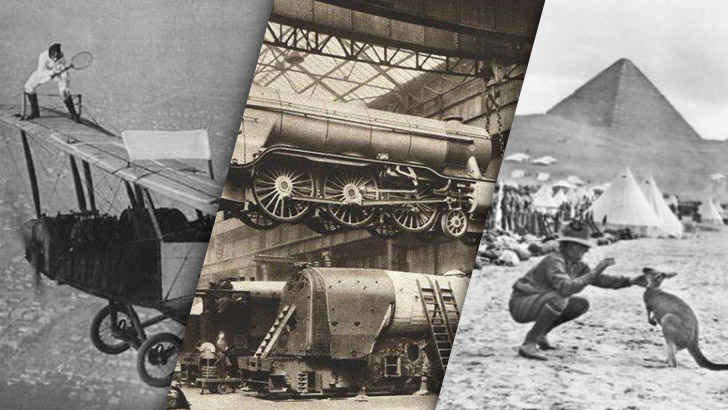

Unedited Historical Photographs From The Past
-


Can You Guess The Name Of These Exotic Cars?
-


Insane Yachts Cruising The Seas
-


The Women From Two and a Half Men Look Way…
-


Clever Marketing Gimmicks That Tricked Consumers
-


25 Facts About Air Force One

